Artist and inventor Bandana Jain works with recycled and eco-friendly materials to create one-of-a-kind artwork for the home.
Sharing a deep concern for the environment, the contemporary artist has been creating artwork using corrugated cardboard for the last seven years. She crafts unique furniture for clients — from couches and desks to tables and lamps.
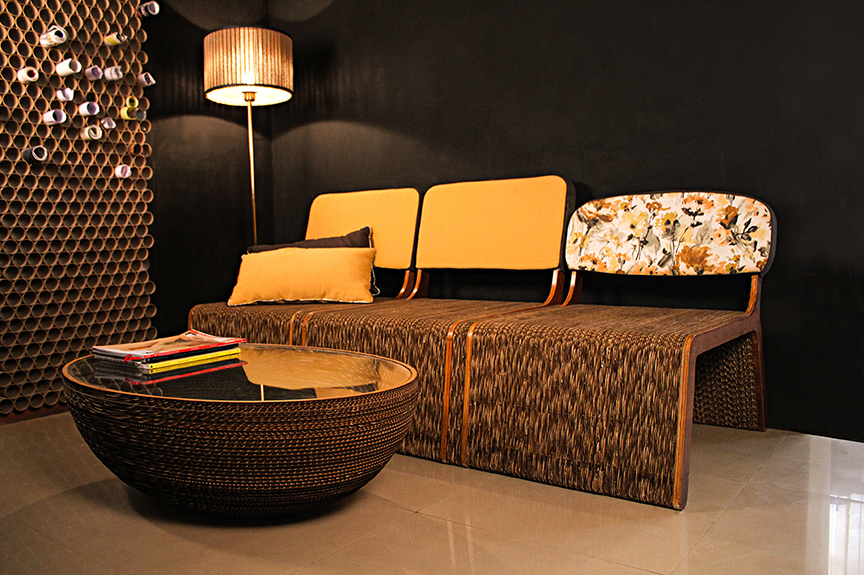
She is also the founder of Sylvn Studio, a business dedicated to conserving the environment. The India-based business is the country’s only design label specialized in hand-crafted décor products made of recycled corrugated cardboard.
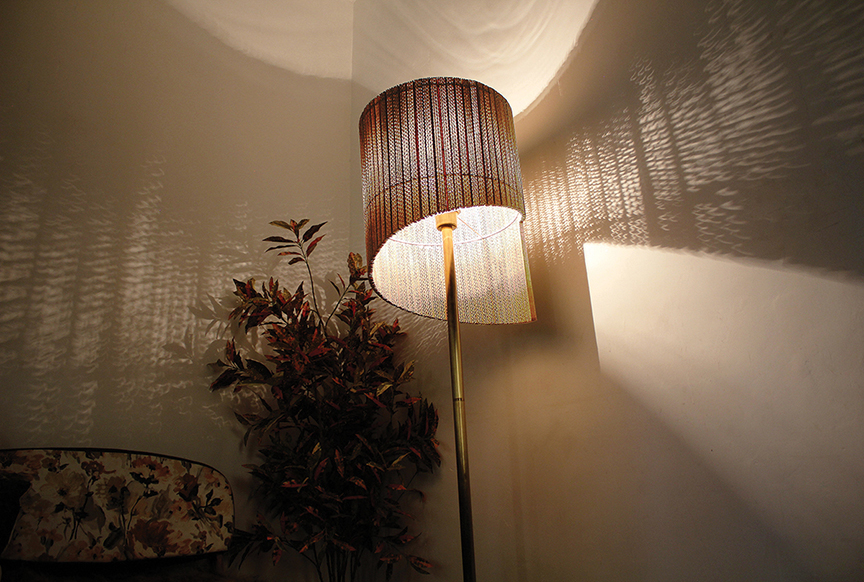
How did you first begin your work with cardboard? Why did you choose this medium?
Initially, I worked with a few other mediums. To choose cardboard as a signature medium was a conscious decision I had taken because I wanted to offer something different. Also I wanted to educate people about adopting sustainable lifestyle.
How has your journey with this medium shifted in the last seven years?
It only grew with time. Corrugated cardboard is certainly not an easy medium to work with. I struggled a lot and over time I gathered experience and maturity to handle this medium. I must say nobody can touch me now.
Why is it important that designers/artists use recycled and eco-friendly mediums and that homeowners choose to purchase these types of artwork?
We are all the children of the earth. The existence of our being is intrinsically connected to nature. As responsible humans, it is for us to ensure that we build a better place for ourselves and subsequent generations to come. This can happen only when we make the right choice.
Why should homeowners incorporate these pieces into their homes?
A well-designed interior accessory revs up the design quotient of your abode. And every accessory in a home is akin to an individual chapter in the overall design narrative. It defines the space and tends to be a conversation starter because of its exclusivity and aesthetics. Who doesn’t want to be talked about?
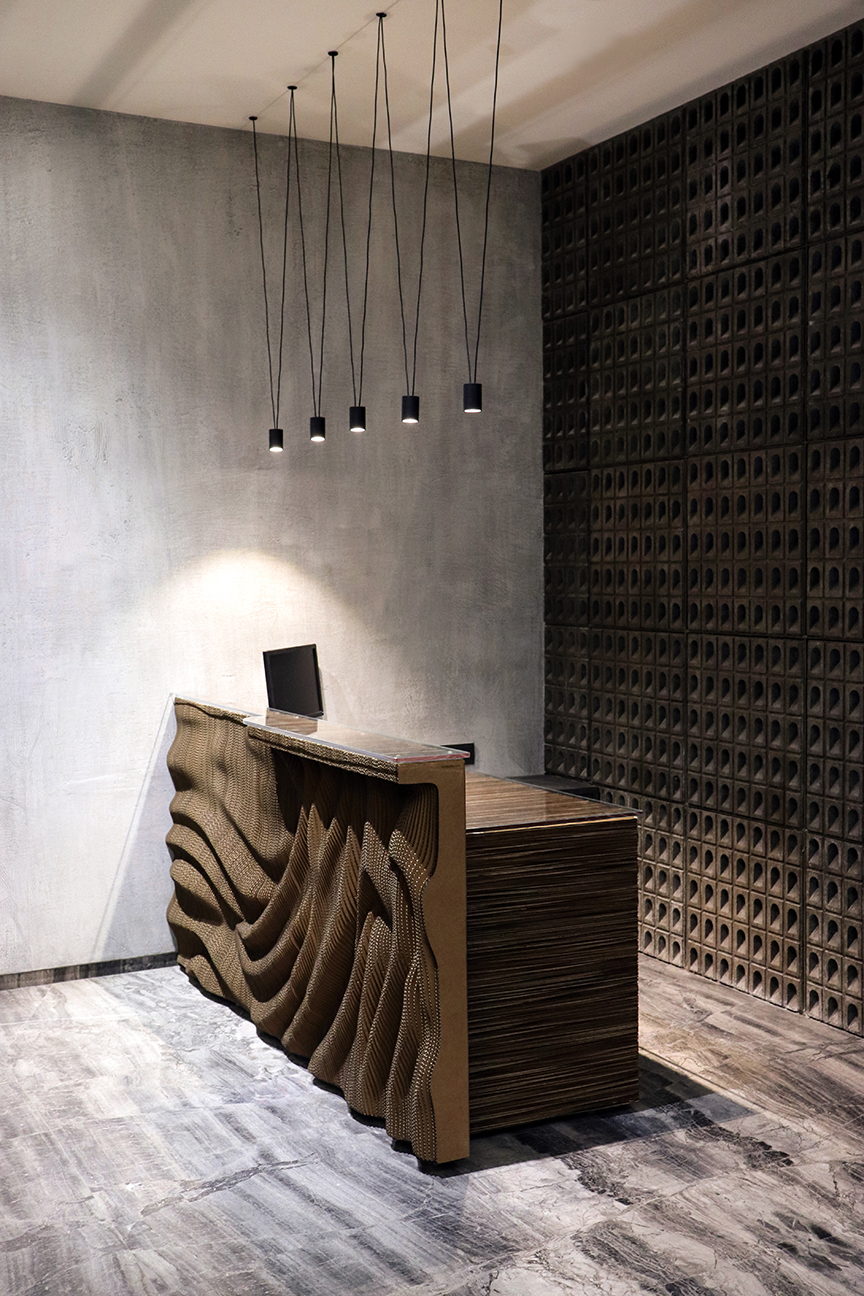
Where do you gather inspiration for your creations?
Inspiration comes to me from a myriad of spaces. As an artist, my observations and experiences guide me. My choice of medium is also a part of my experience. Once I was in Zermatt where I had the chance to explore the Eco Village; the determination of the locals to keep the town sustainable inspired me a great deal.
Photos courtesy of Bandana Jain
This female-led, boutique interior design firm is leaving a positive and lasting impression on the environment.
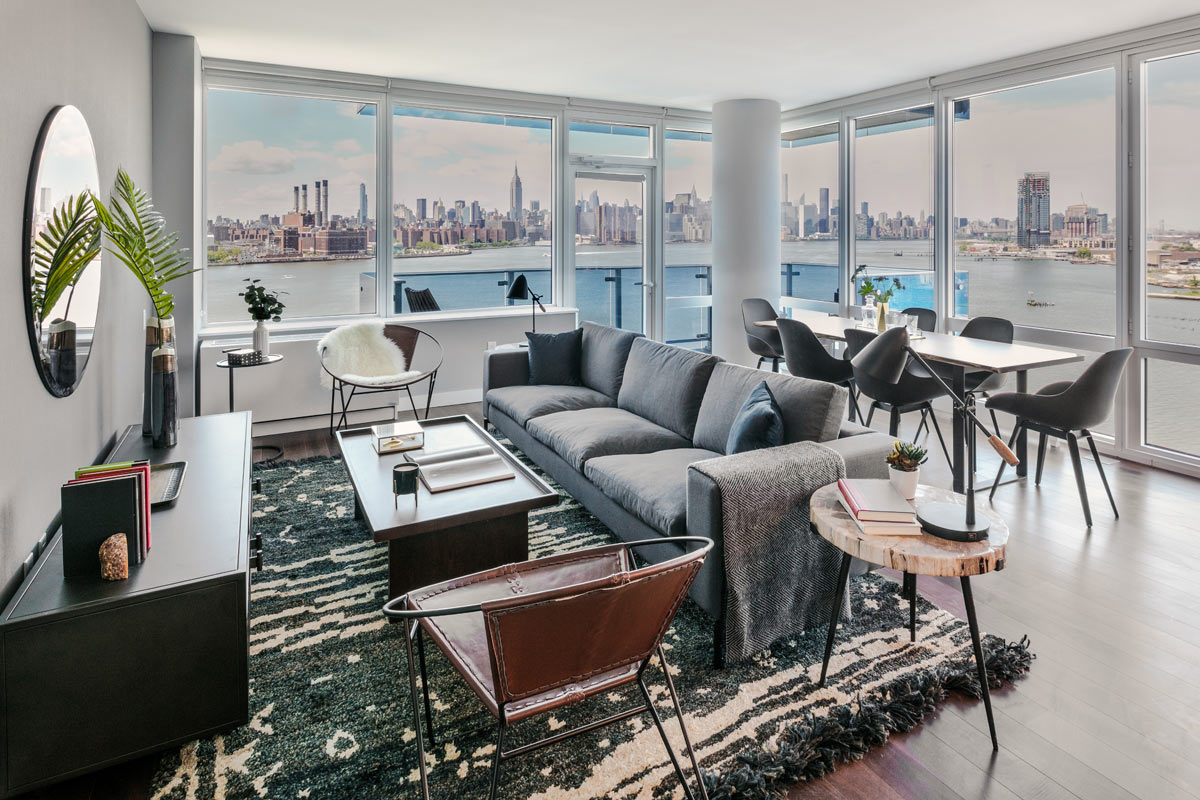
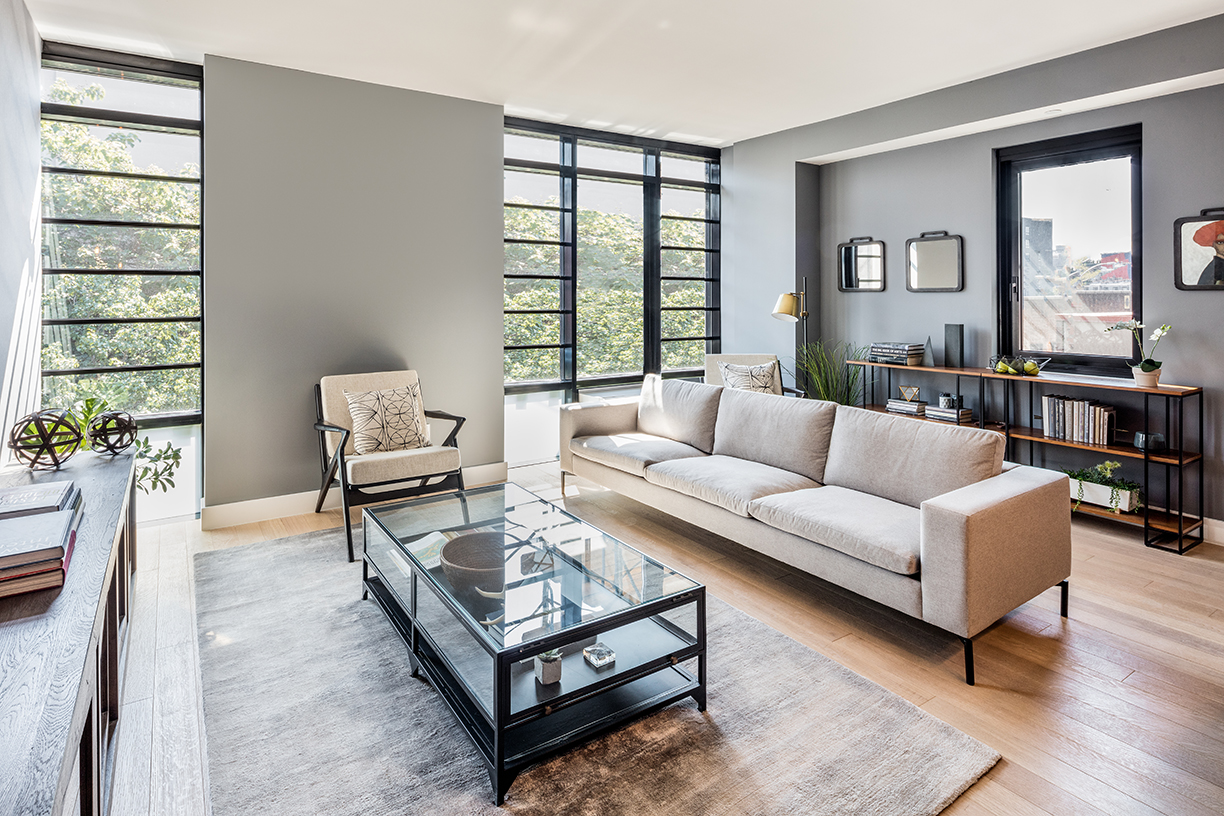
500 Waverly
The Design High, an eco-friendly firm, specializes in designing and staging residential buildings in Brooklyn and Manhattan with high profile projects including 63 Wall Street, 1N4th, 265 East Houston, LEVEL and 507 West Chelsea.
Whether it’s using tiles that are made of recycled contents or local materials to avoid shipping, Design High does its best to preserve the environment.
When it comes to design, the team must follow its clients’ requests. However, the team does its best to educate clients and offer eco-friendly options when possible, according to Founder and Creative Director Highlyann Krasnow.
In addition to encouraging an eco-friendly design, the team donates monthly to the Natural Resource Defense Council and Earthjustice. “We want to make sure some of our profits end up in the right place,” says Krasnow. “Ultimately, they’re not creating anymore land, this is the place that we live. I want to, at least, try to leave this planet better off than I found it.”
Design High also maintains a green office environment by avoiding the use of paper, banning all plastic and paper cups, and using notebooks made of recycled materials.
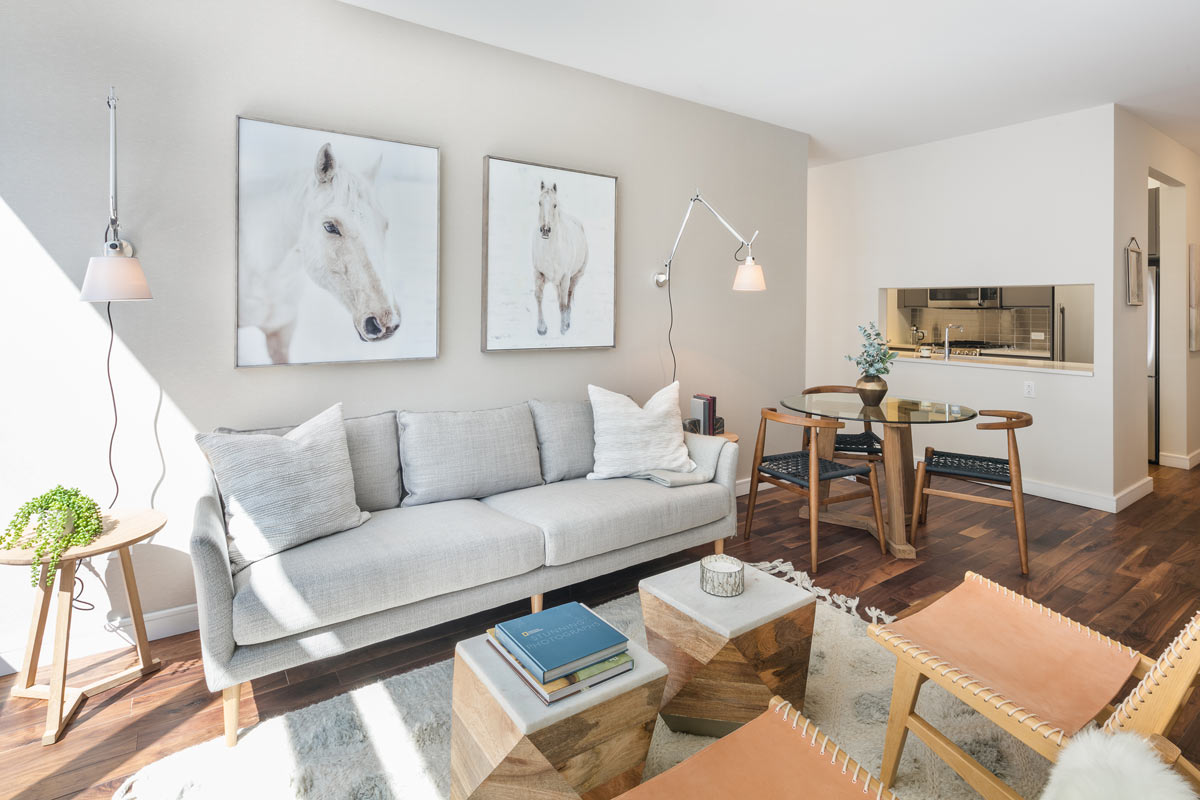
507 West Chelsea
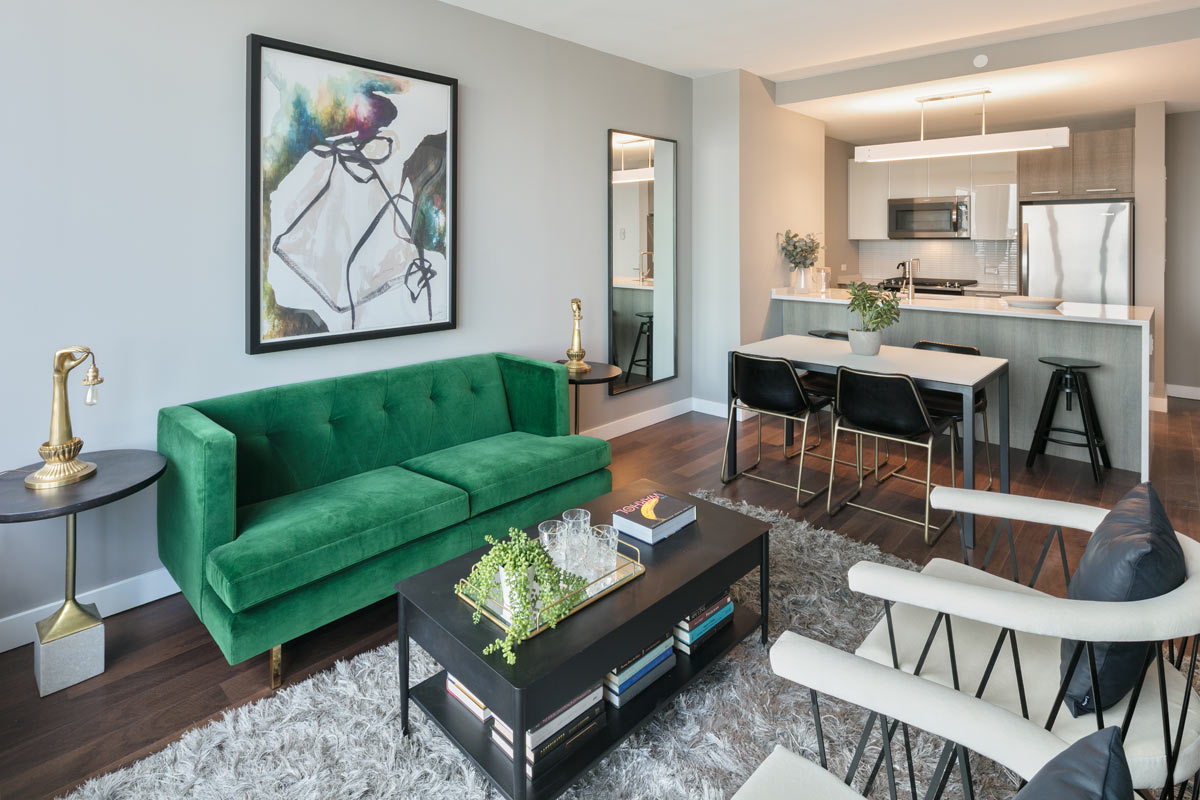
LEVEL
“We are very conscious of how we use our land. That is how I grew up, and it was important to me to bring that to the company as well,” says Krawnow on her decision to start an eco-conscious business.
Recent advances in technology and the mass production of eco-friendly resources have made it easier to be environmentally conscious in 2018 than in recent years. “I think people are starting to see that something has to be done,” says Krawnow, who notes an increased push toward sustainability in recent years.
Lead by a group of five women, Design High hopes other woman are inspired by the company’s success. However, Krawnow notes that the company’s lack of men was not purposeful. “We are all women,” Krasnow jokes. “But we’ve tried to hire men, it just ended up this way.”
She does believe, however, that the female-led team brings unique perspective and balance to a typically male-driven scene. “We do work on a lot of construction sites, and we are really the only woman,” Krasnow jokes. “It is important to feel empowered, and to not let that be intimidating. I think we bring a nice ying to the yang.”
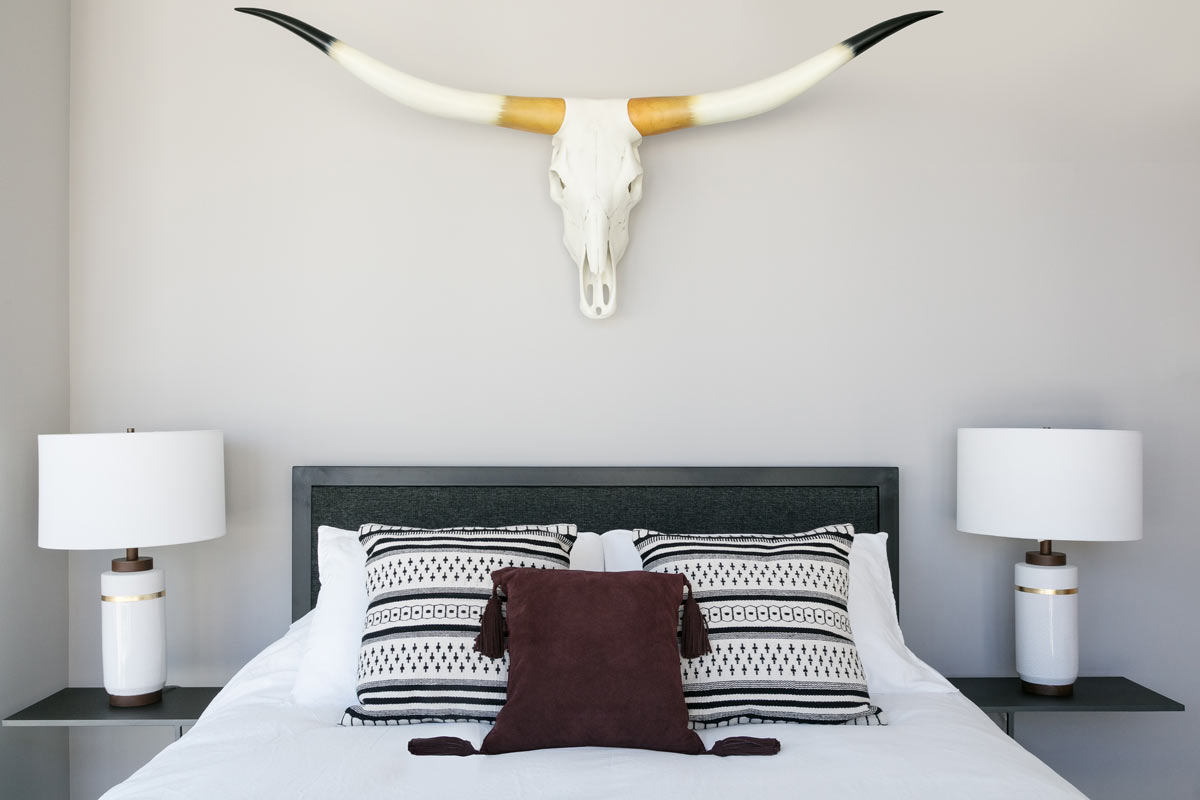
265 East Houston
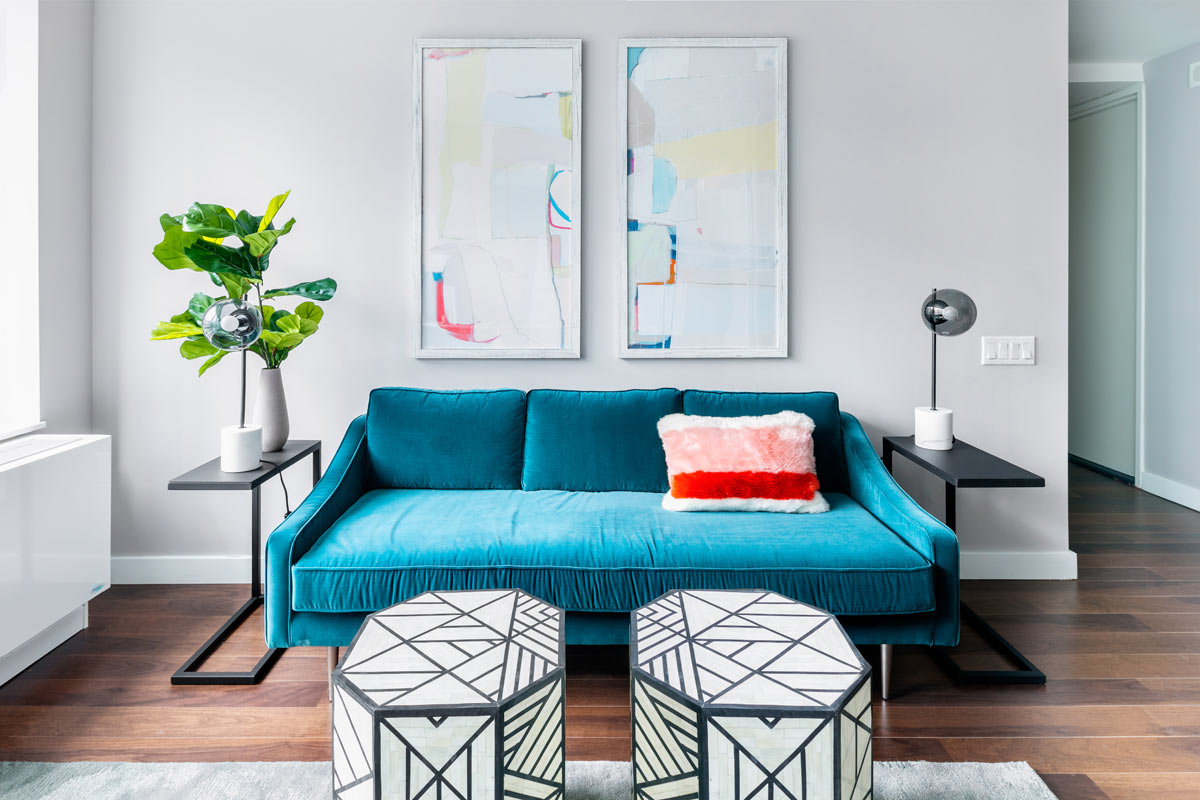
LEVEL
Krasnow has an important message to both men and women who are considering entrepreneurship — “I think that the best advice I could give is just not be too scared to try.”
“It is very intimidating, there was a lot I didn’t know. I think you have to give yourself some time to let it work without giving up on the idea,” says Krasnow, who says it took at least two years for her to feel confident that her business would succeed.
Photos courtesy of The Design High
Working to develop urban areas around the country is based on focusing on and improving the lives of residents for future years to come. To emphasize these goals, many developments are implementing sustainability methods in design and architecture to benefit the surrounding community and inhabitants.
Urby — Staten Island, NY
Located on the North Shore waterfront, Staten Island Urby is the largest new-construction development in Staten Island that offers specially curated social spaces that encourage natural opportunities for neighbors to meet and interact, including an urban farm featuring farmer-in-residence, Zaro Bates.
The 5,000-square-foot farm is the first commercial farm to be incorporated into an urban residential development. The farm grows over 50 varieties of produce across 5 major categories: greens, summer vegetables, flowers, herbs and roots. The farmers offer workshops to the community and residents including a fermentation series, growing your own herbs and microgreens, and bee-keeping workshops. Produce from the farm is used by the residents, served in the kitchen and sold at a weekly farmer’s market. Zaro’s business partner, Asher Landes, oversees the apiary, which encompasses 20 beehives on the roof of Urby that produce honey.
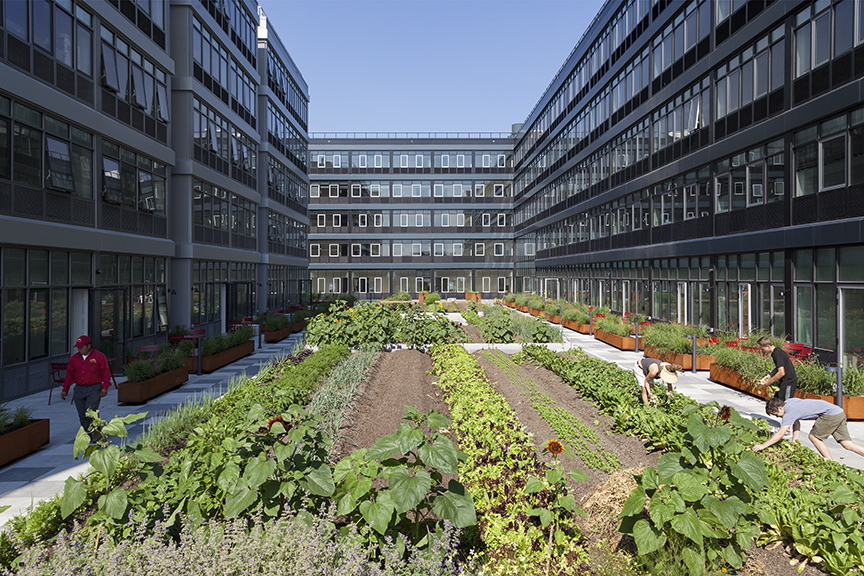
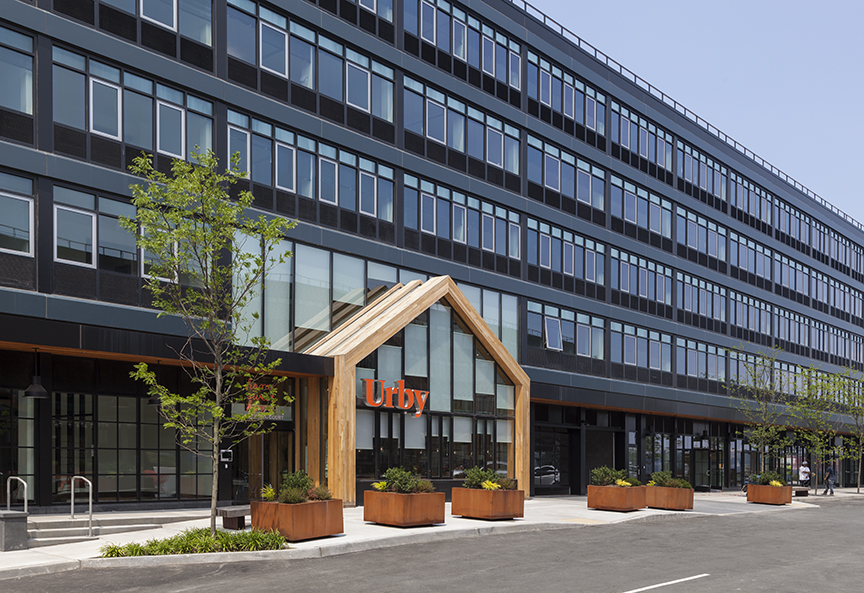
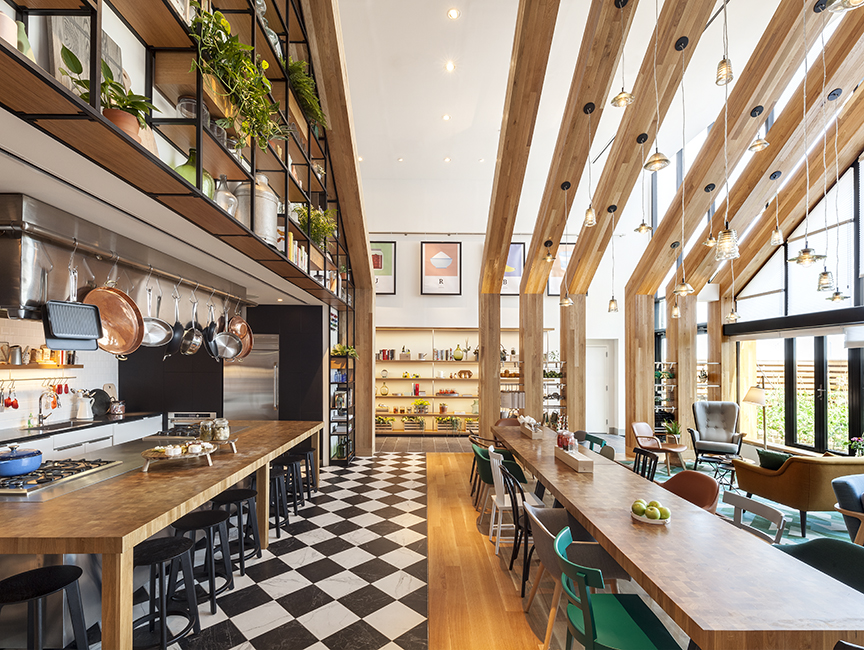
Photos courtesy of Ewout Huibers
Residence 2680 – San Francisco, CA
Located in the prestigious Pacific Heights neighborhood, Residence 2680 is the largest single-family home renovation that is built to Passive House standards with Home Platinum LEED certification in San Francisco. Developed by Troon Pacific and built to strict sustainability standards, naturally sourced, low-chemical producing materials like wood, stone and glass were incorporated throughout the home.
“We believe in the inspirational power of natural beauty and use principles of biophilic design throughout our homes to uplift our spirits and enhance health and wellness in the urban environment,” says Gregory Malin, CEO of Troon Pacific. Gregory Malin.
With mental and physical wellness in mind, Troon Pacific incorporates a variety of design features, such as Zen wellness gardens, retractable skylights to provide natural ventilation and clean air, rain chains for natural water filtration, landscaped roof decks, saunas, steam rooms and more.
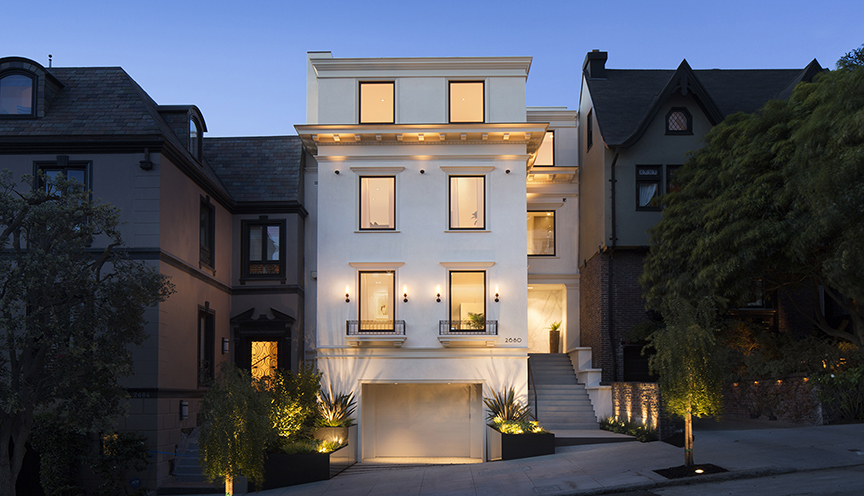
Photo courtesy Troon Pacific.
570 Broome — SoHo, NY
570 Broome is a new 54-unit luxury boutique condominium that is the latest addition to Hudson Square, which has become a highly sought-after residential neighborhood and go-to destination for retailers, restaurants and businesses.
The material used to build the condominium is a result of a new collaboration between sintered stone slabs and Pureti, an aqueous and titanium dioxide nanoparticle-based treatment. This treatment on the surface of the building is activated through light energy to transform the moisture in the air into oxidizing agents, which destroy pollution-causing particles. For 570 Broome, this equates to taking 2,000 cars off the road for a year or the purifying power of 500 trees.
The overall architectural design references the area’s history through the large framed windows, along with the building’s silhouette evocative of staggered cubes.
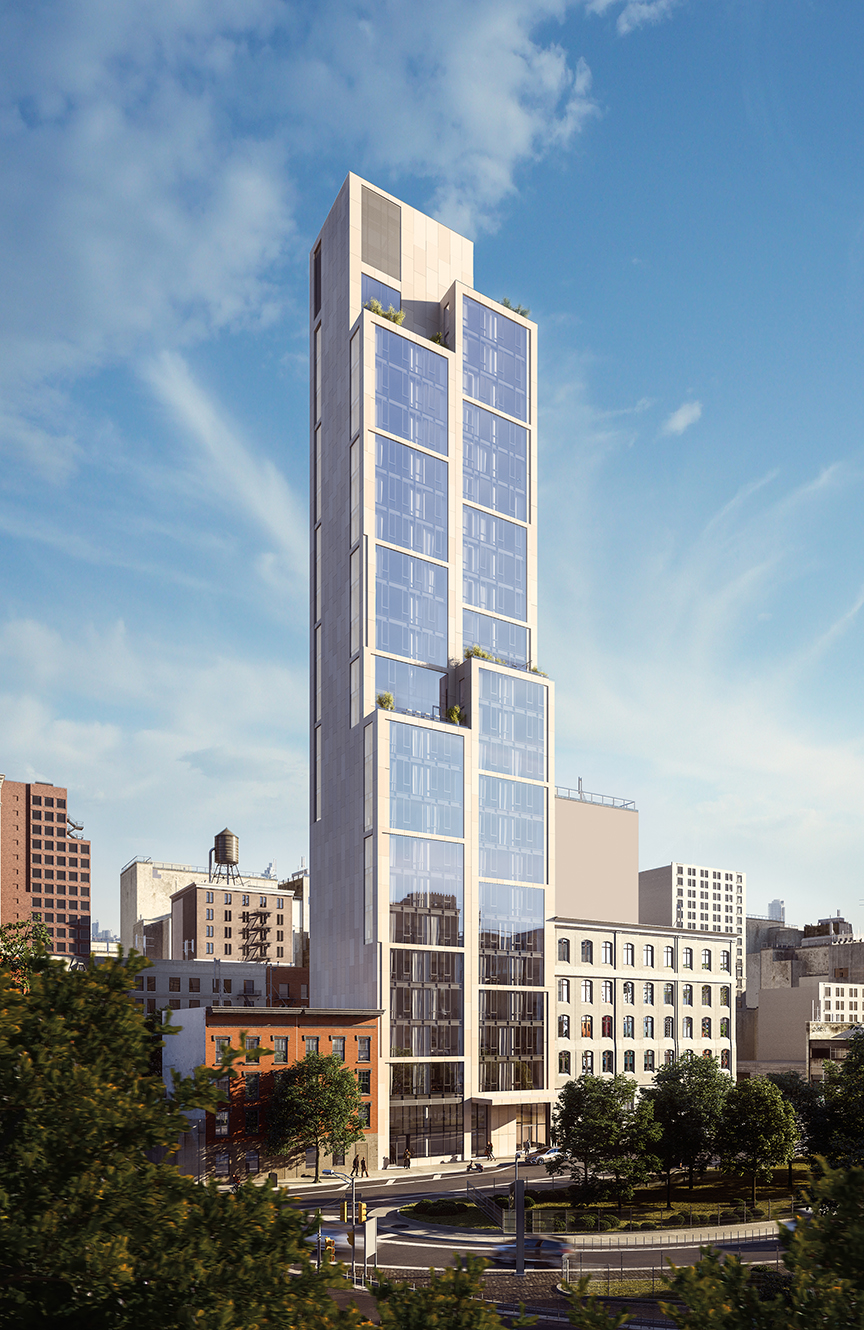
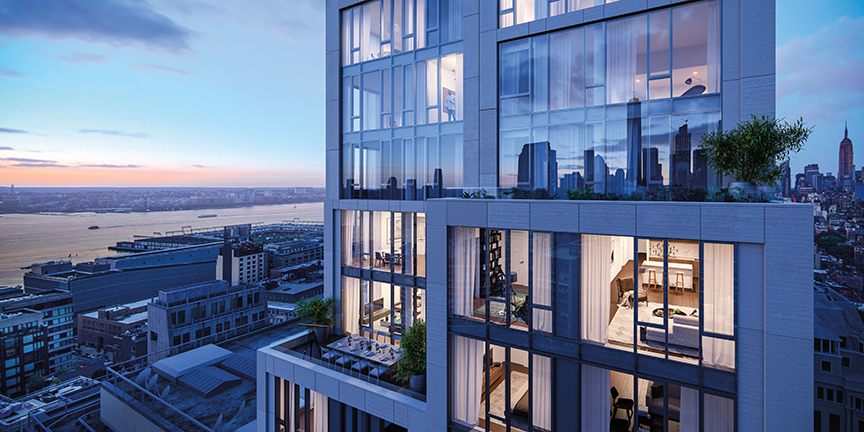
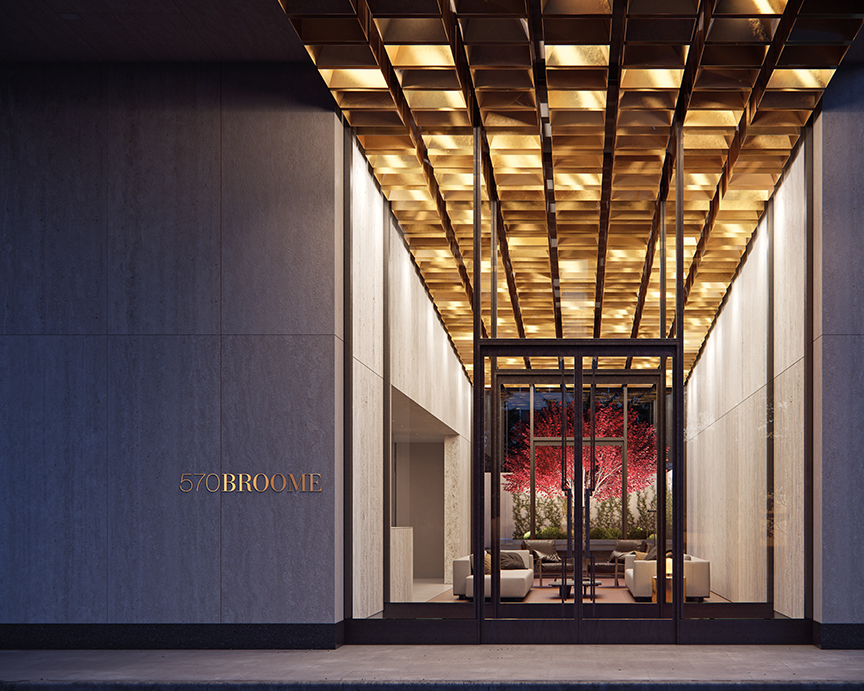
Photos courtesy Builtd.
Manitoba Hydro Place — Winnipeg, Canada
Manitoba Hydro Place offers a fully integrated design that capitalizes on Winnipeg’s abundance of sunshine and gusting winds to harness solar and wind energies. The capital “A” form of the tower comprises two wings fused at the north and splayed open to the south. This opening is filled with three, six-story stacked atria or winter gardens that act as the lungs of the building as well as 78-foot waterfalls that humidify/dehumidify incoming air.
The design is 80-percent more efficient than conventional Winnipeg buildings, making it the third most energy-efficient, large scale building in the world. It is also the first large-scale office tower in North America to be LEED Platinum-certified.
Photo courtesy Gerry Kopelow.
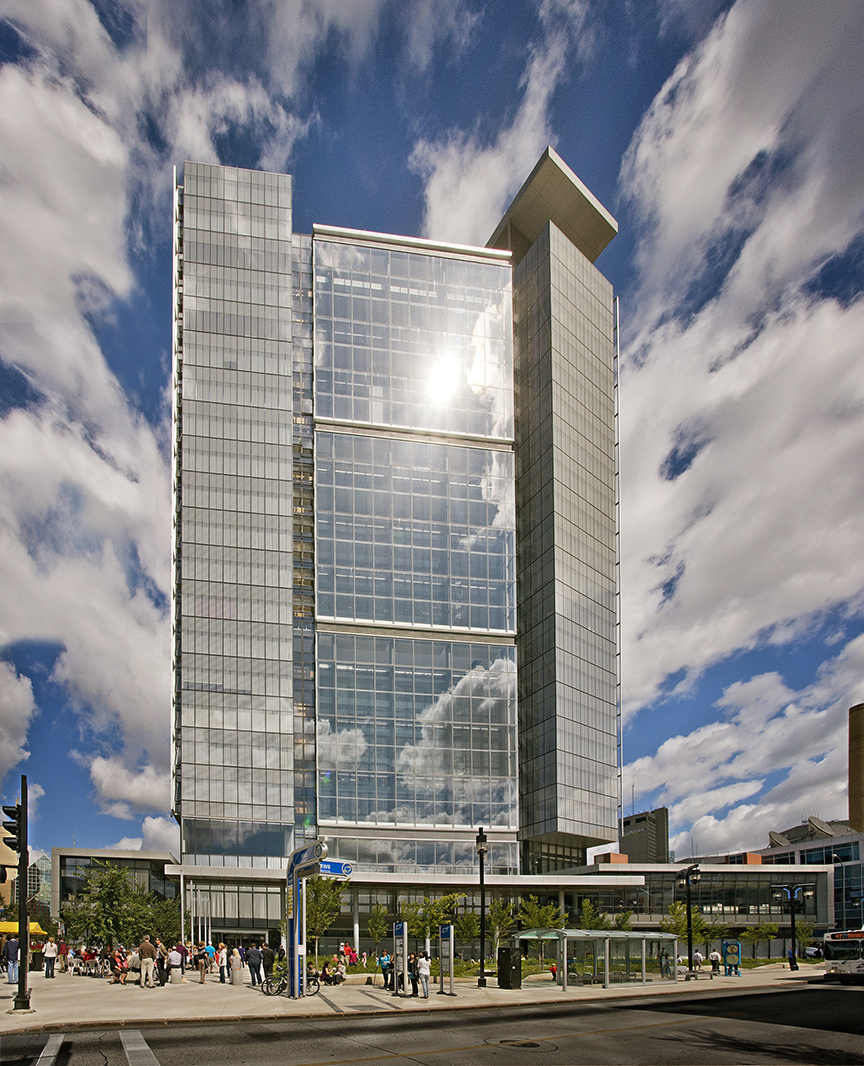
Market Square — San Francisco, CA
Market Square, a Gold LEED-certified project, was designed by BCV Architecture + Interiors with sustainability and community in mind. The two-building project transformed the dark, outdated and unused space into a cohesive part of its Mid-Market San Francisco neighborhood.
Natural and recycled materials, including reclaimed wood from one of the building’s earlier additions, are used throughout. Market Square merges state-of-the-art office space with an integrated ground floor community featuring the best of San Francisco’s food and retail purveyors. BCV Architecture + Interiors view sustainability through a myriad of lenses and considers the ethical, cultural, social, economic and historical implication of a project in addition to the technical solutions.
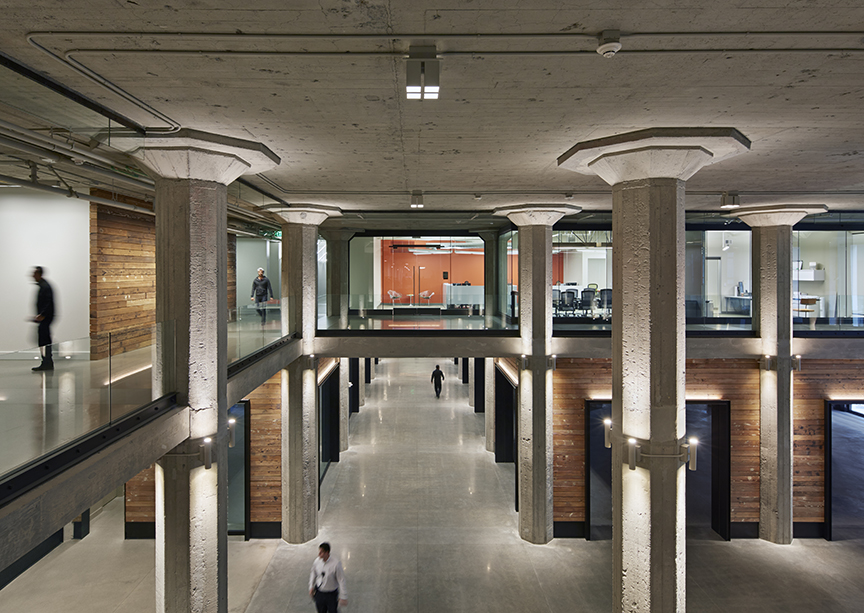
Photo courtesy Bruce Damonte.
12 Warren — Tribeca, NY
12 Warren is a boutique residential condominium nestled in Tribeca developed, designed and constructed by DDG. This development features a hand-laid façade and is an impressive addition to one of Manhattan’s most desired residential neighborhoods.
12 Warren is specifically designed with NYC Energy Code compliance and LEED certification in mind, targeting a Silver level LEED certification. Additional components include a green roof system, accommodating alternative transportation storage, stormwater collection and reuse, reduction of heat island effect with concrete, light grey toned pavers and landscaping elements, construction waste management and secondary tenant-controlled heating elements to reduce overall energy and electrical output. By choosing native and local materials, such as Bluestone from upstate New York, something close to home and natural, helped ensure more sustainable building practices.
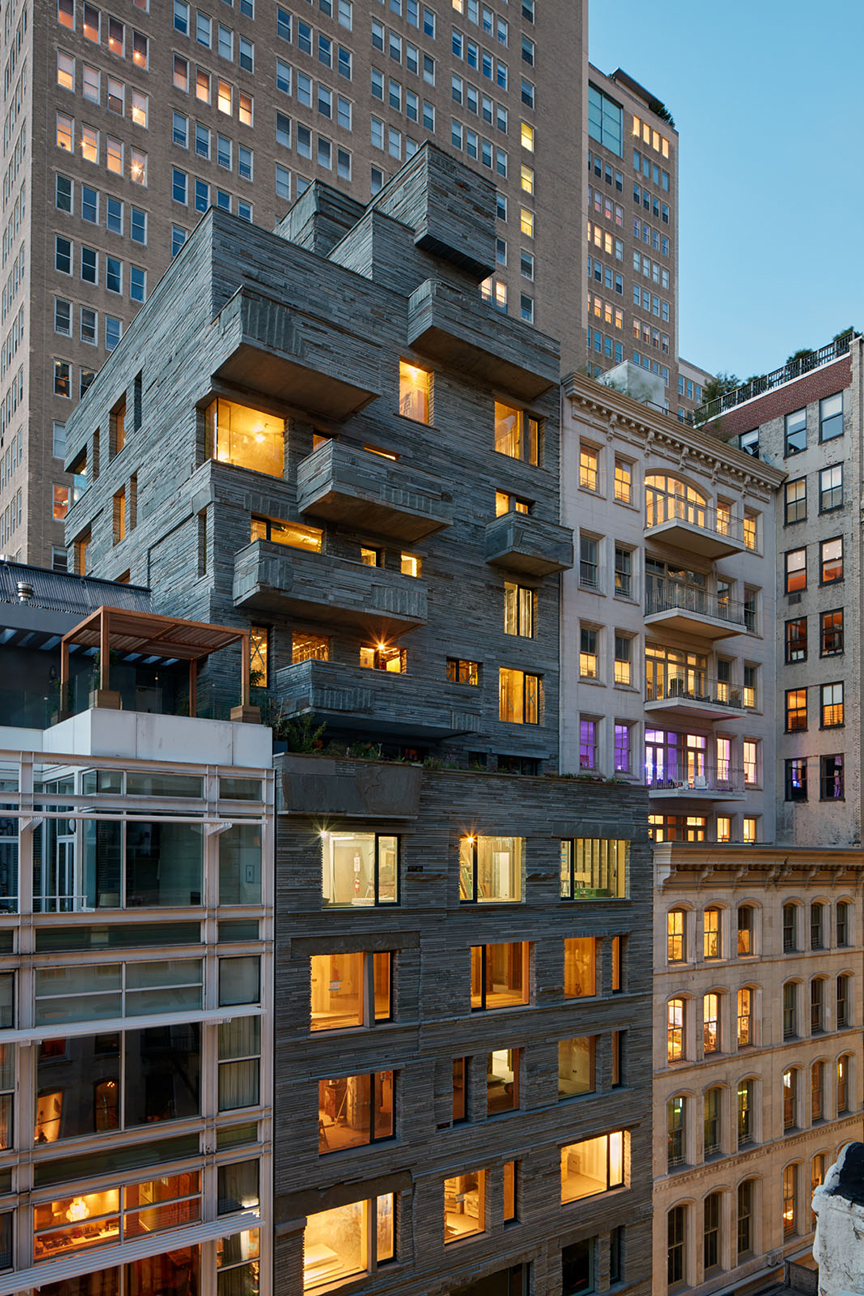
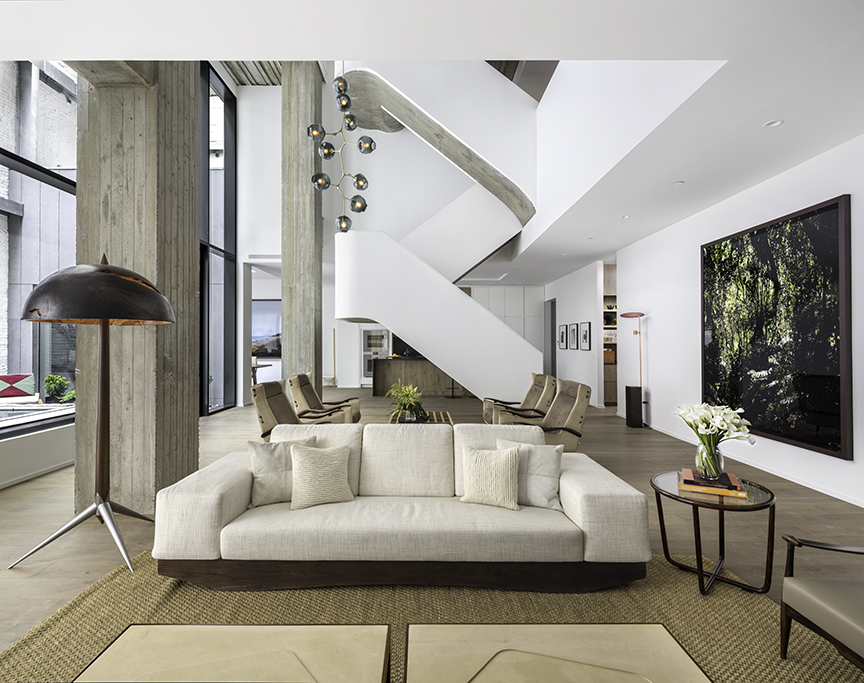
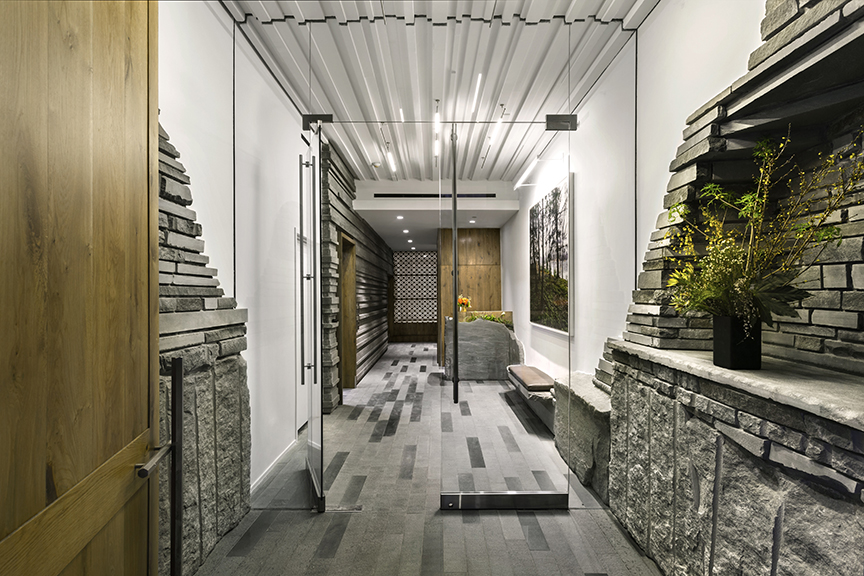
Top left photo courtesy of Bruce Damonte. Top and bottom right photo courtesy Robert Granoff.
As luxury brands like BMW and Bentley introduce electric cars, the eco-conscious car is making its way into the luxury sector.
By Alyssa Gautieri
Electric cars have long been ignored by car fanatics, who prefer traditional air-cooled engines for their powerful exhaust notes and rumble. However, high-end buyers are increasingly considering hybrid or plug-in vehicles as the trend toward sustainability skyrockets and more luxury electric cars are produced.
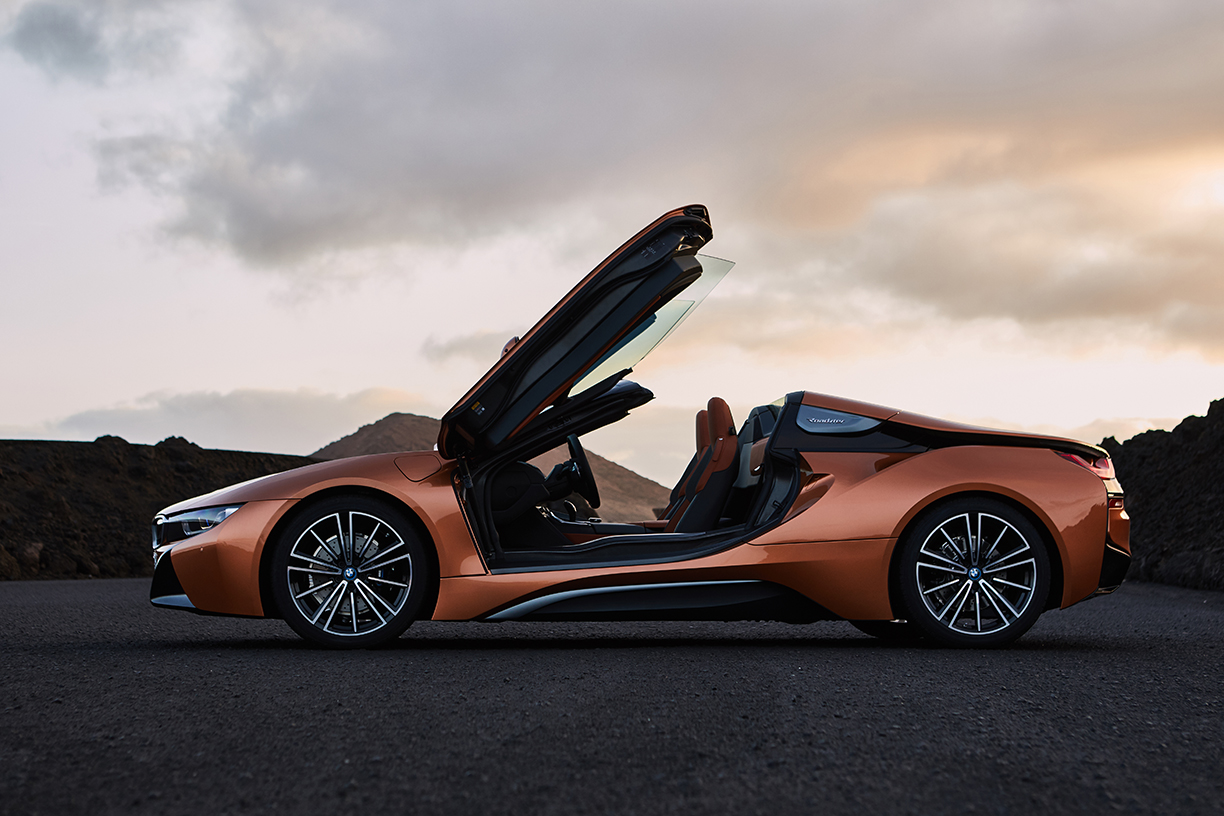
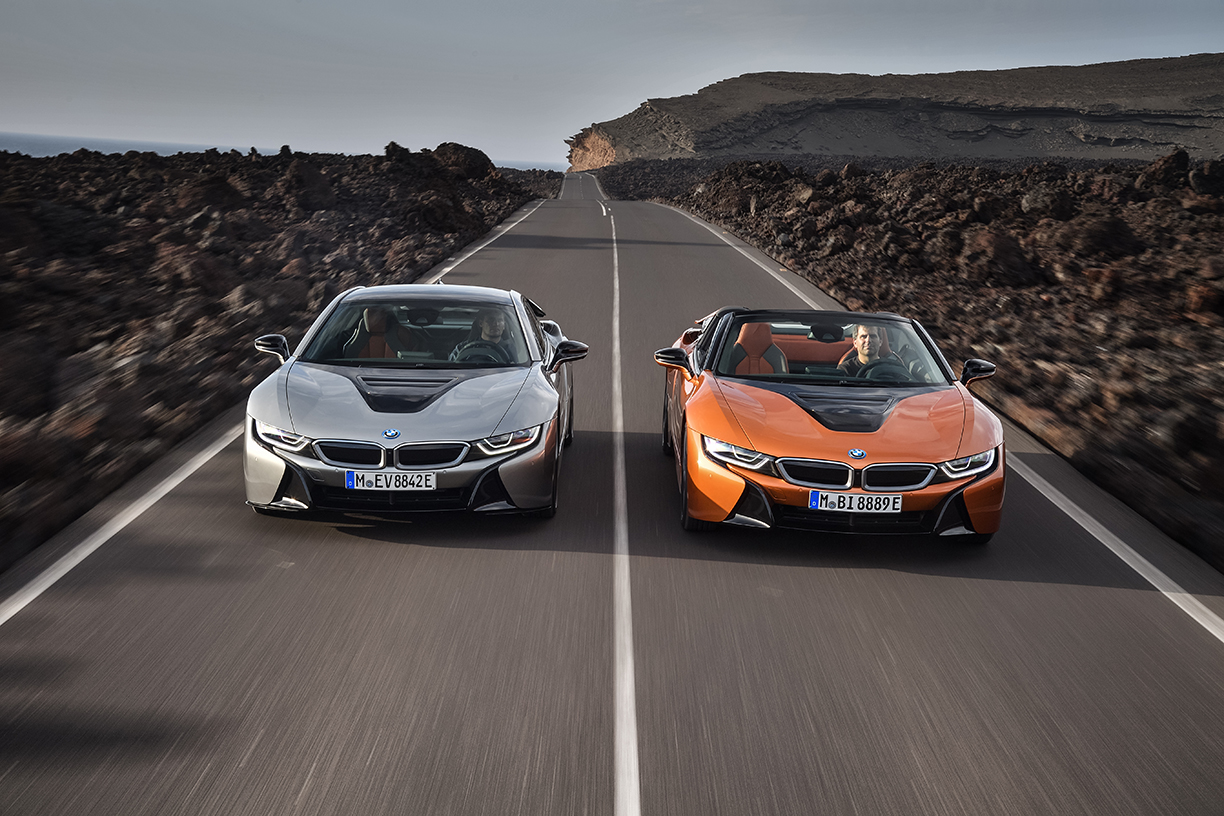
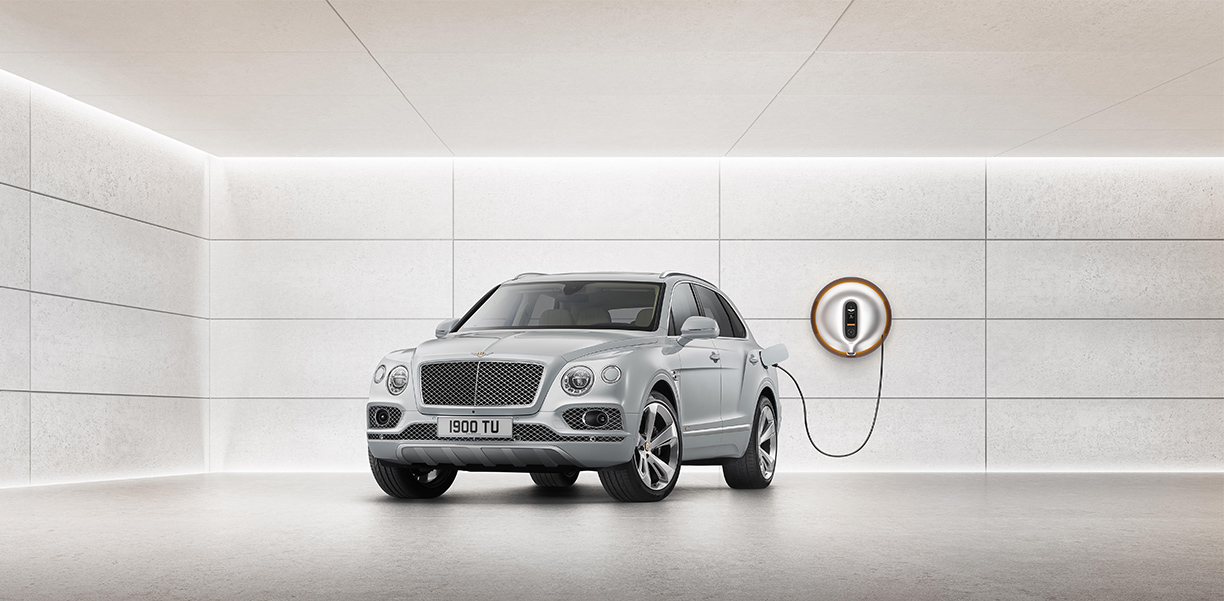
In recent years, car companies have failed to acknowledge that wealthy car buyers admire electric power, according to Bloomberg.
Additionally, a new generation of car buyers are entering the market as more millennials begin to purchase cars. At the annual Geneva Motor Show in March, Bentley Motors Ltd.’s new chairman and CEO Adrian Hallmark noted that young drivers care about sustainable and ethical transportation more than buyers have in the past, Bloomberg reports.
“If you look at millennials or the younger generation, there does seem to be more thoughtfulness about what kind of mark you leave on the planet — more so than a decade ago,” Brinley says, as reported by Bloomberg. “As we move forward in the luxury landscape, for this type of buyer, having one in your garage will be crucial.”
Also at the Geneva Motor Show, Bentley introduced the 2019 Bentley Bentayga hybrid luxury SUV, which is the brand’s first steps toward electrification and the world’s first luxury hybrid model.
Merging effortless performance on the open road and silent, emission-free driving in the city, the new plug-in hybrid model will be the company’s most efficient model ever with CO2 emissions of 75 g/km.
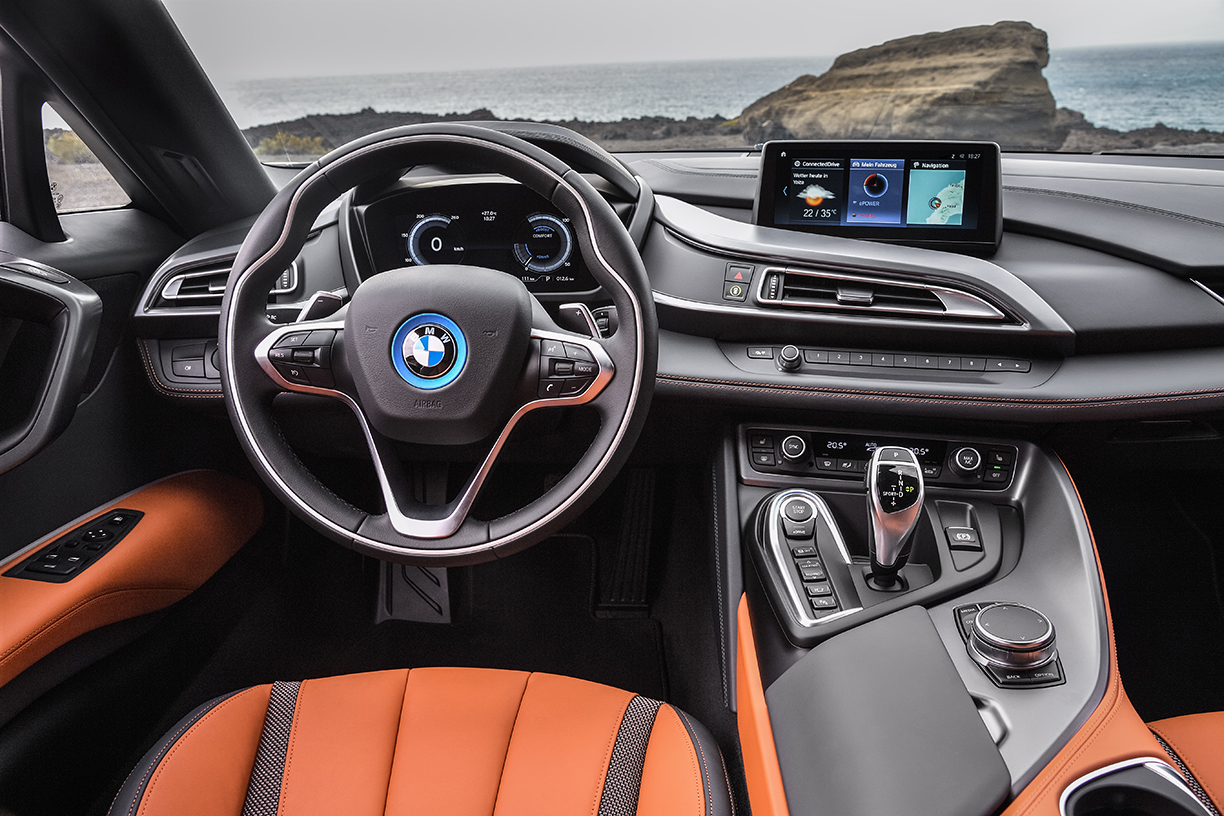
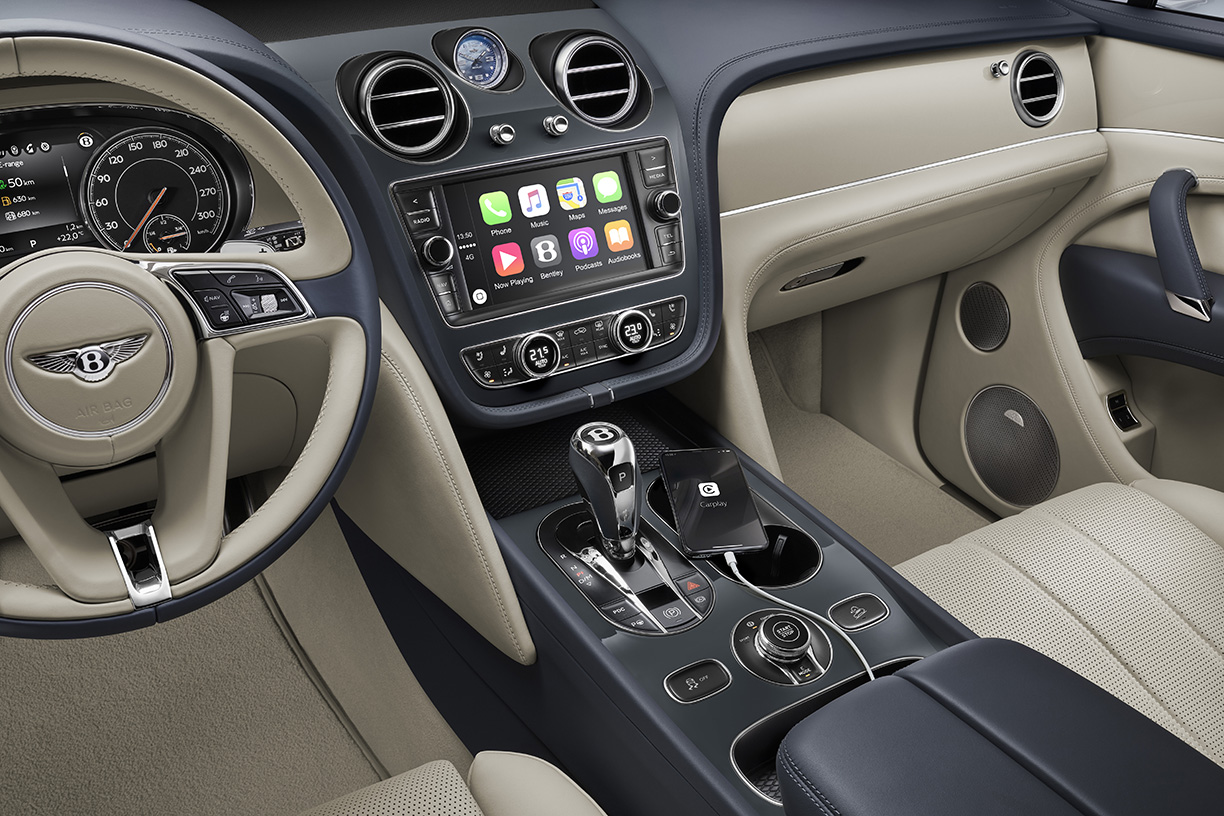
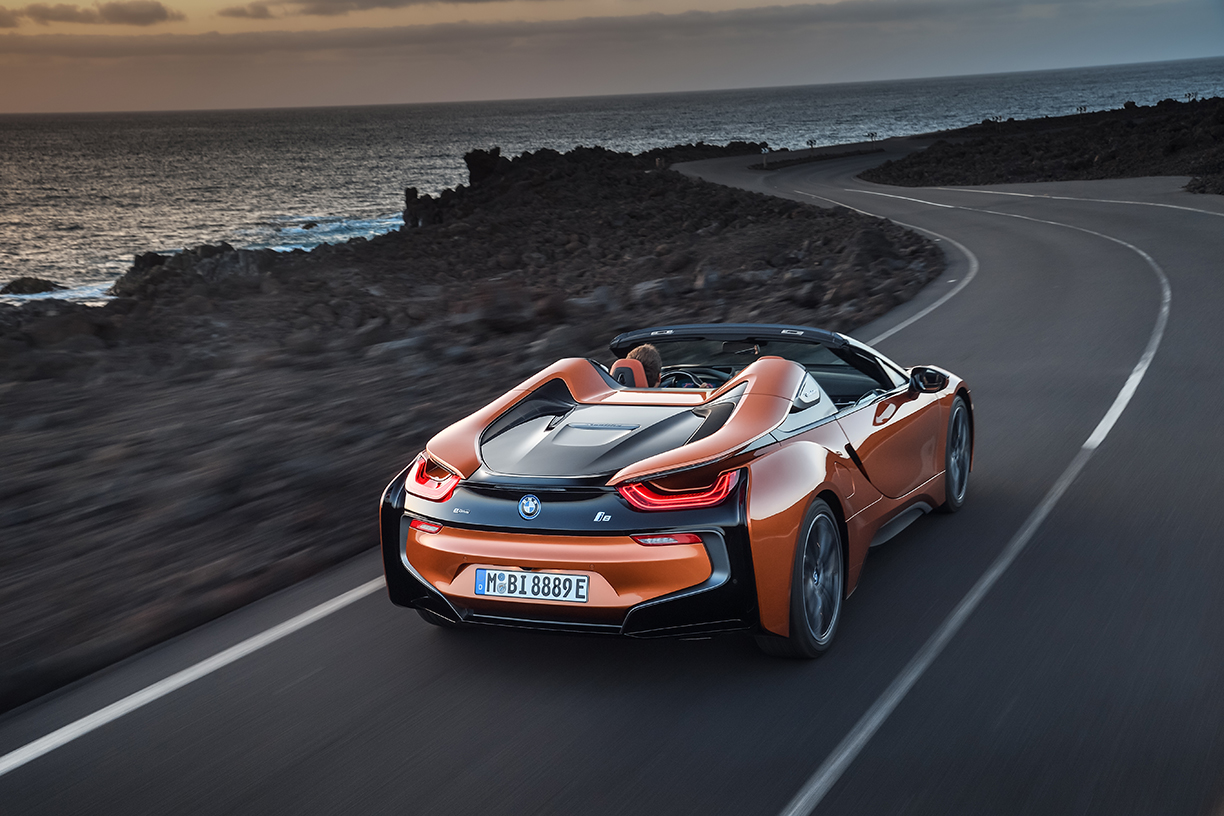
BMW has also introduced the first-ever BMW i8 Roadster. The BMW i8 Roadster, which is virtually silent and has zero CO2 emissions, can cover up to 18 miles in purely electric driving.
Combining locally emission-free mobility and high-caliber performance, the Roadster is among the first fully viable, high-performance plug-in hybrid electric cars, according to Bloomberg.
Bentley and BMW are only two of the many prestigious car brands that are now producing electric, energy-efficient cars. As a generation of young people continue to prioritize green efforts, the electric car may begin to dominate the luxury sector within the next 10 years.
Photos courtesy of BMW and Bently
Creating the greenest of green homes is an art form.
By Sarah Binder
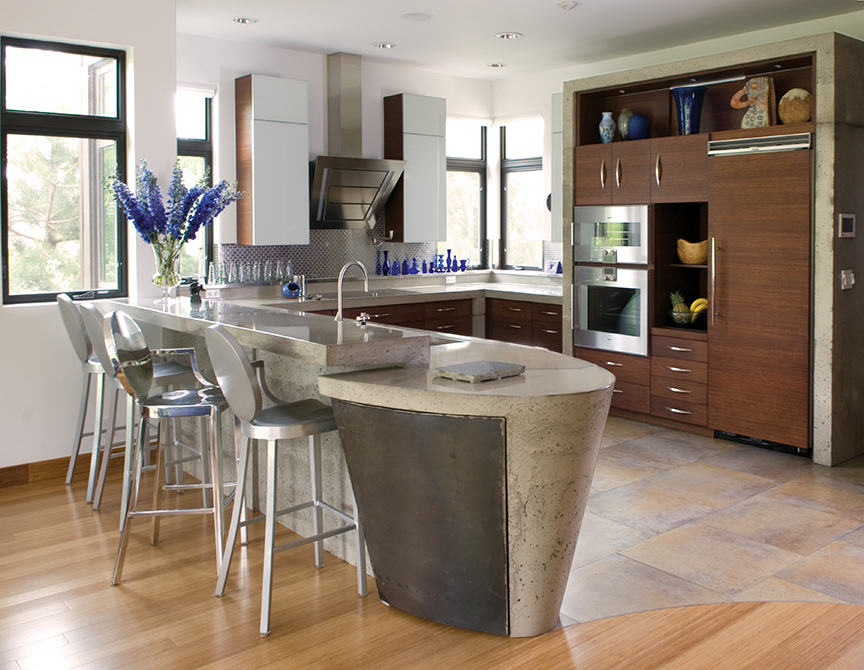
Certified LEED Platinum, the Edge House was awarded “2009 Green Home of the Year” by the Colorado Home Builder’s Association.
Colorado is well-known for being a leader in green residential building in America. In Boulder, the professional building community (engineers, architects, builders, et cetera) passionately adheres to one of the most progressive and strict energy building codes in the country. Here, the bar for sustainability in luxury homes is reached, and raised, regularly — without compromising on beauty and livability.
Architect Scott Rodwin, founding principal of Rodwin Architecture and president of Skycastle Construction, is an ambassador for this art form, educating everyone from his clients seeking the green homes of their dreams, to architects, builders, and Realtors across the country.
While environmental issues such as global climate change can be polarizing, Rodwin has found throughout his 25-plus-year career that nearly all clients care about creating a healthy living environment at home for their families.
“Nobody wants a toxic living environment, and nobody wants to pay more energy bills than they have to,” he says. “We talk to our clients to learn what level of energy performance they desire in their home, and then we thoughtfully and carefully design it.”
Almost any architect or builder can construct a home that uses 50 percent of the allowable amount of energy by code, Rodwin notes. But, creating a luxury home that is highly energy efficient or zero-energy, meaning on an annual basis that it produces as much energy as it consumes, requires a deeply experienced and knowledgeable team. He recommends utilizing a design/build team wherein the project is managed and executed by a single entity.
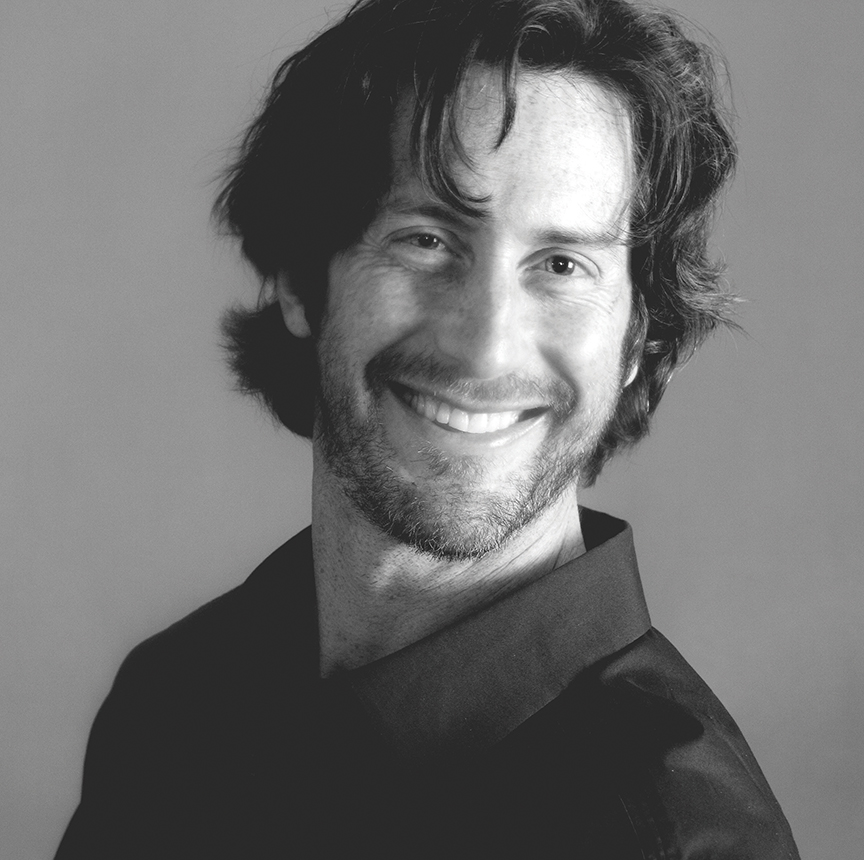
Scott Rodwin, LEED AP, is founding principal of Rodwin Architecture in Boulder, Colorado. In 2006, he was named American Institute of Architects’ “Young Architect of the Year” for the U.S. Western Mountain Region.
The design/build process is fully integrated, has a single point of responsibility for any issues that may arise during a project, and leads to high-quality, detailed work that results in increased client satisfaction. “When you’re looking to create a net-zero building, the performance level that you are aiming for is so high that you have to have complete cohesiveness among everyone involved,” Rodwin says.
His favorite residential design/build project is net-zero energy, and also was his firm’s most challenging undertaking to date, taking four times as many hours of design to complete than an average project. An entrepreneur and CEO moving to Boulder from Germany challenged Rodwin to build the greenest home in America. Built in 2007, the 6,200-square-foot, $3.5 million Edge House is certified LEED Platinum.
“[The client] asked us to pioneer a number of technologies, including the first legally permitted grey water system in Colorado. He designed a brand-new grey water system for this house, which he got patented,” Rodwin explains.
Green building has progressed significantly since 1999, when Rodwin launched his firm. Today, to obtain a building permit in the United States, the plans must be farily energy efficient. The energy section of the International Residential Code has advanced farther and more rapidly than any other section of the code in the past two decades, he notes. Each municipality then adopts and can modify that baseline code.
“In order to get a building permit in Boulder, if you are building a 5,000-square-foot house, the home is required to be net-zero energy,” says Rodwin. “You have to do everything right — renewable energy on the roof, exceptionally high-quality construction, and passive solar.”
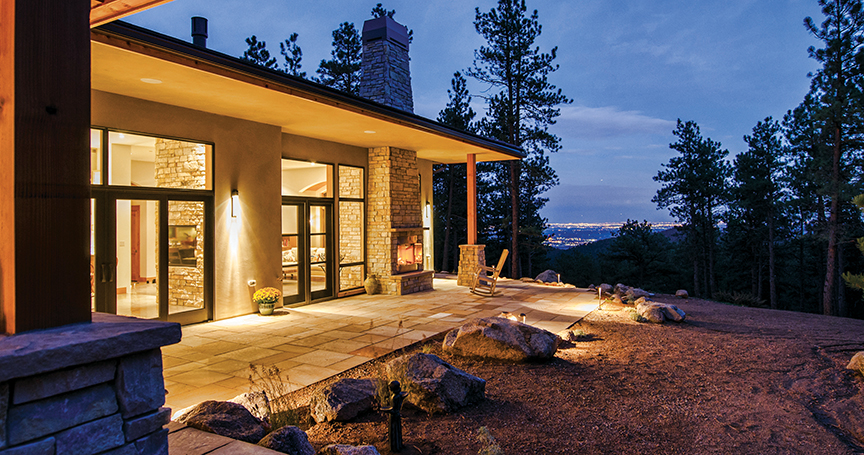
Nestled into a forested hillside glade, the Dineen Residence combines old world materials with clean contemporary lines.
The only sustainable technology that is completely free, passive solar design is the “starting point” to achieving a net-zero house. It involves strategically designing a home’s orientation, windows, walls, and more, so that the home distributes solar energy in the form of heat in the winter and rejects solar heat in the summer.
While his firm’s specialty is creating brand-new, high-end custom homes, Rodwin suggests a few strategies owners of existing homes can implement to improve the thermal comfort and energy efficiency of their properties. Weatherization (caulking and sealing) can cost just a few thousand dollars, yet will pay for itself over a few years. After weatherizing, owners should consider adding new insulation and upgrading their windows, especially single-pane or metal windows, which are significant weak spots.
A number of upgrades, such as adding solar panels, generate value through rebates or the opportunity to sell excess energy back to one’s utility company, in addition to increasing the value of the home.
“Upgrade your mechanical system,” Rodwin recommends. “Old, open combustion mechanical systems are only about 70 percent efficient. They also lead uncombusted gases into the house. Most states and utility companies offer energy-efficiency rebates to their customers, and you can usually get a subsidized system.”
Whether going green from the ground up or through updates, homeowners do not need to compromise on beauty, quality, size, views, or any other aspect in order to achieve a highly sustainable home, Rodwin notes. “Green building pays back over time and creates a more valuable house. You’re getting a better building. You’re getting a Tesla.”
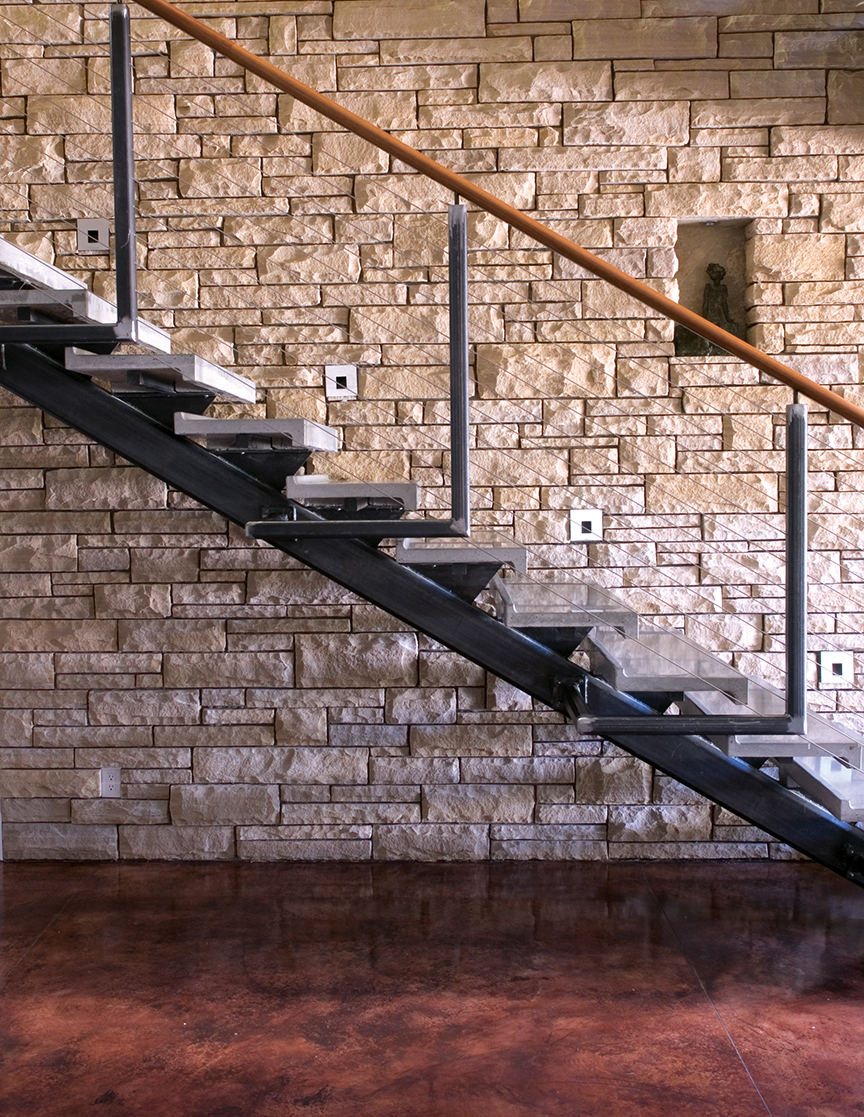
In Boulder, where everyone “speaks fluent green building,” says Rodwin, the mission is to continue pushing the envelope. His team already has a high level of knowledge of what the next level of green building entails, including larger and more solar arrays, triple-paned windows, and full-foam insulation packages.
“Our goal is no longer net-zero energy. Our new goal is regenerative design, wherein you produce more energy over the course of a year than you consume. Regenerative housing is Olympic-level green building — only a handful of these homes exist in the whole country.”
Photos courtesy Rodwin Architecture + Skycastle Construction
In light of the environmental climate, we’ve seen governors and business leaders from both political parties join together in support of sustainability efforts. Tourism and real estate industries are also stepping up and using their own money and resources to maintain their commitment to helping Mother Earth. Palmetto Bluff, Hualālai and Mayakoba are a few example of leading resort and real estate communities paving the way for a better future. This is how they are doing it:
Hualalai
Hualālai, a luxury oceanfront community on the exclusive Kona-Kohala Coast, offers a comprehensive conservancy program committed to sustainability.



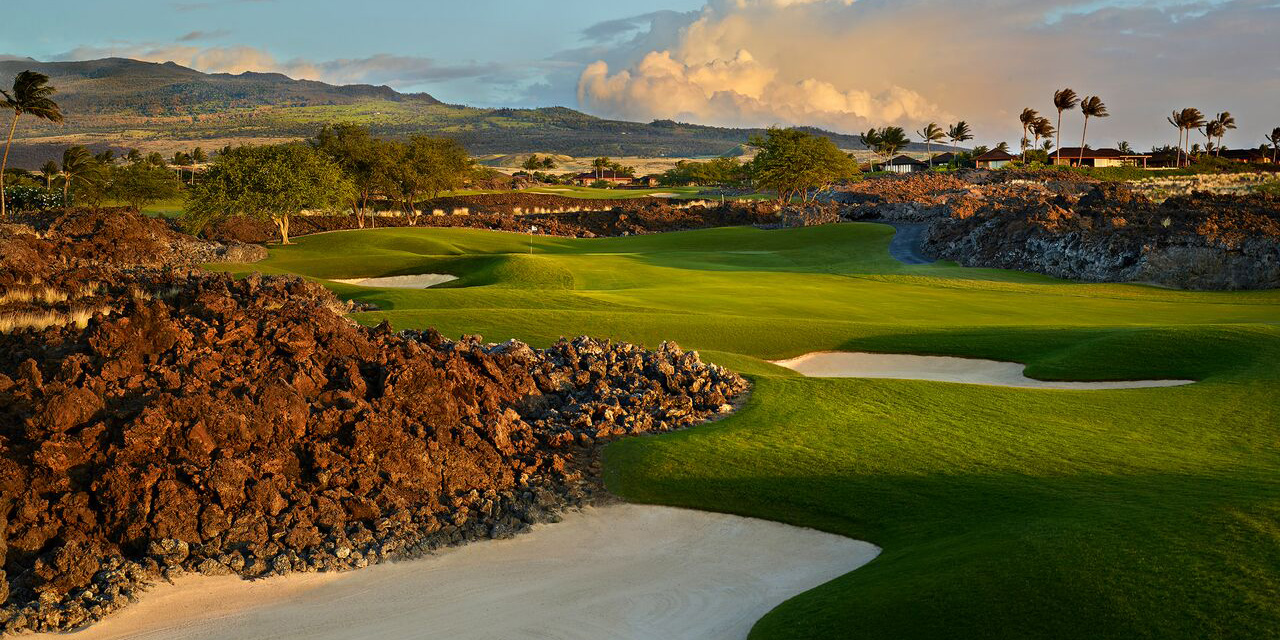
- David Chai, director of natural resources, has revitalized the area with a coastal wetland ecosystem featuring native plants, fish and wildlife.
- The Marine Life Advisory Committee manages fishery resources at the Kaʻūpūlehu shoreline.
- The Natural Resources Department at Hualālai maintains an aquaculture program to raise fresh seafood.
- The property offers interactive educational programming, including behind-the-scenes tours for guests and children.
Palmetto Bluff
Palmetto Bluff is the largest remaining waterfront property on the East Coast, a 20,000-acre nature preserve in the heart of South Carolina’s Lowcountry. When Crescent Communities purchased the land in 2000, it created the Palmetto Bluff Conservancy to ensure that the stewardship practices of previous owners were continued. Crescent set out to develop the community with one priority: preserving the unique natural environment of the property.

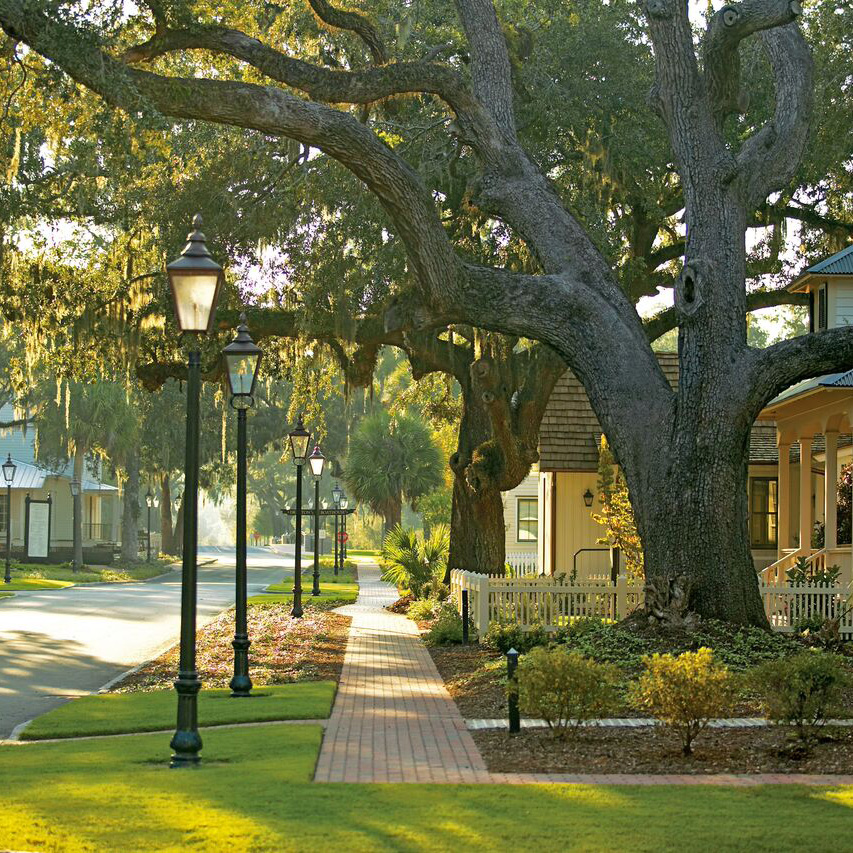
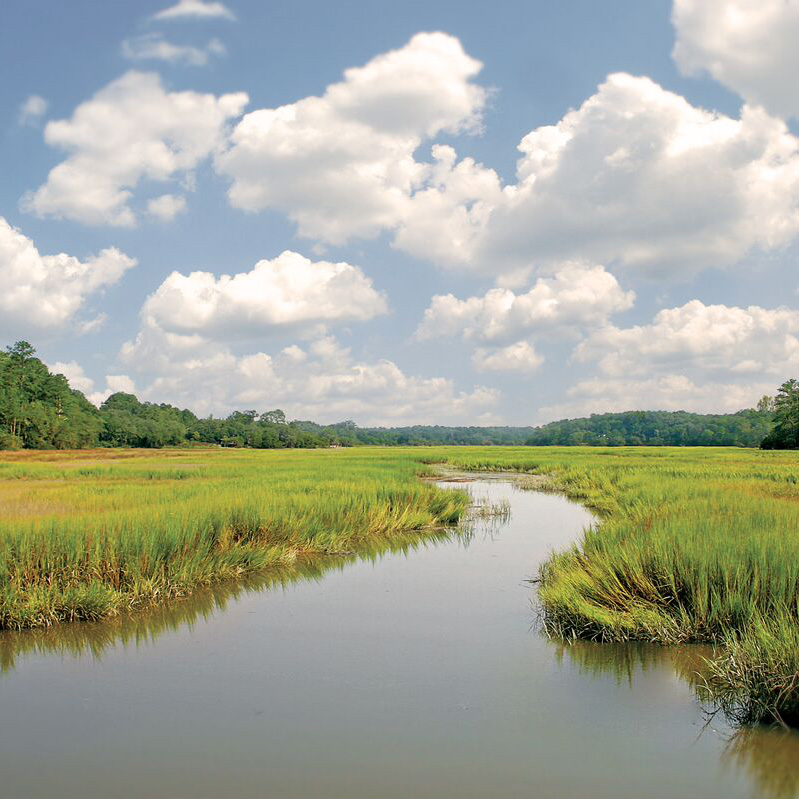
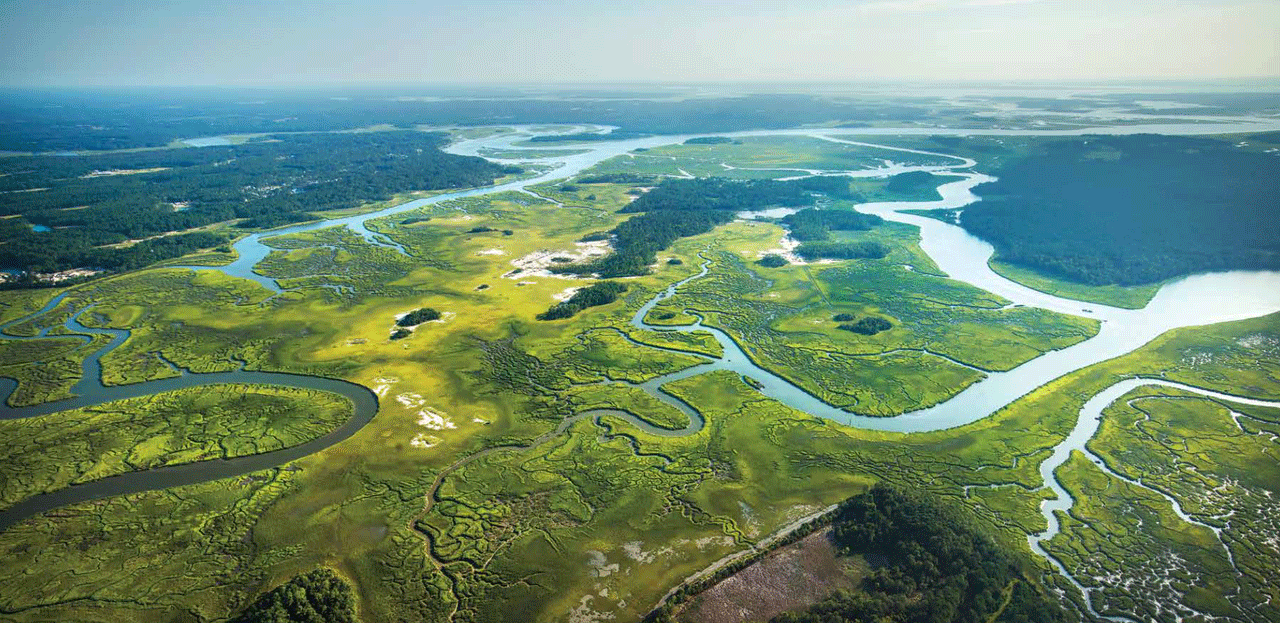
The Conservancy
- ensures the Bluff’s natural resources and vast wildlife are not only intact but flourishing.
- operates with an “anti-developer” mindset, slashing the originally planned 8,000 homes to 4,000.
- ensures a portion of all sales go to the non-profit organization.
- offers educational events for both owners and guests.
Mayakoba
Mayakoba is an eco-conscious luxury resort development amid lush mangroves lining a white-sand beach that is home to four hotels: Fairmont Mayakoba, Rosewood Mayakoba, Banyan Tree Mayakoba and Andaz Mayakoba. It has implemented significant practices to encourage sustainability.
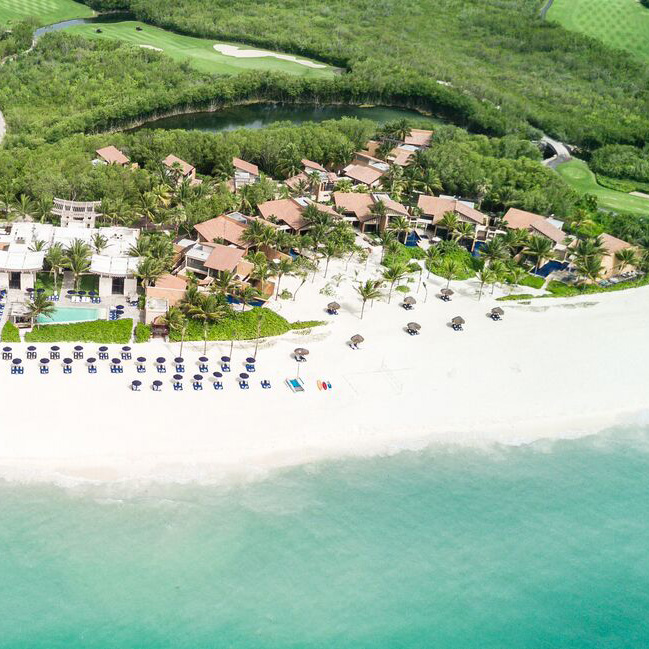
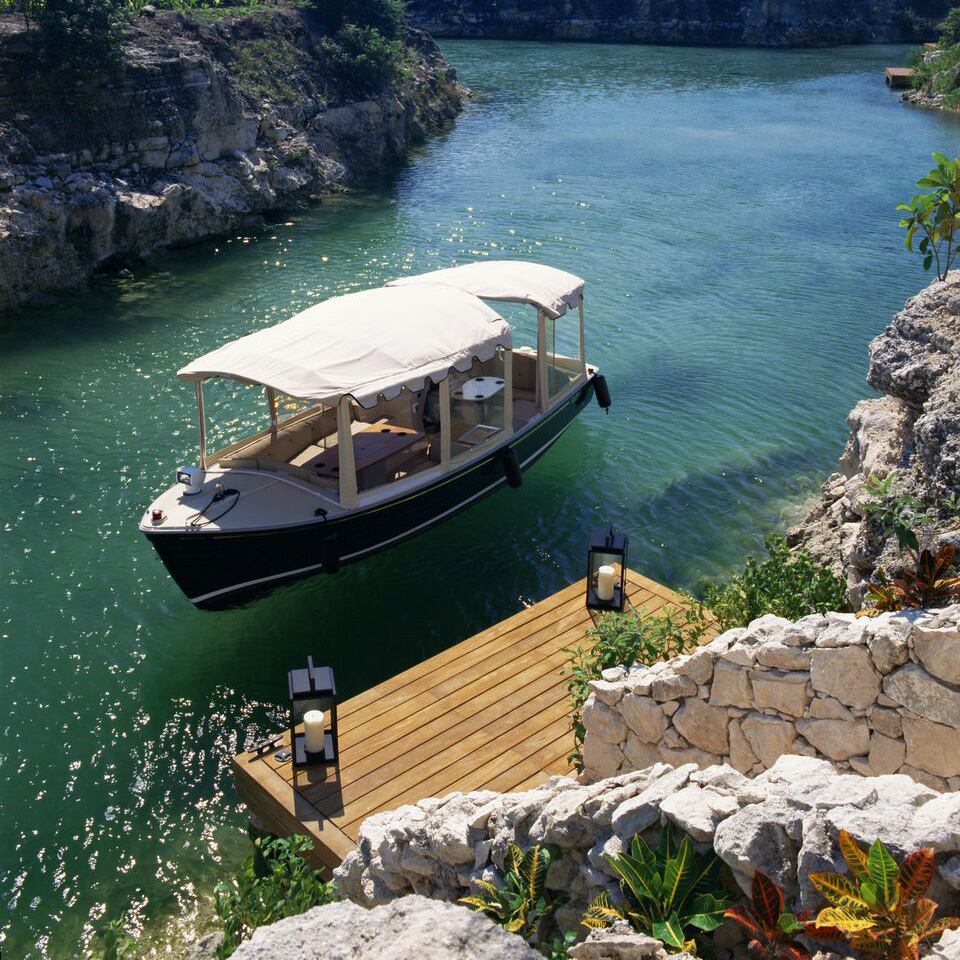
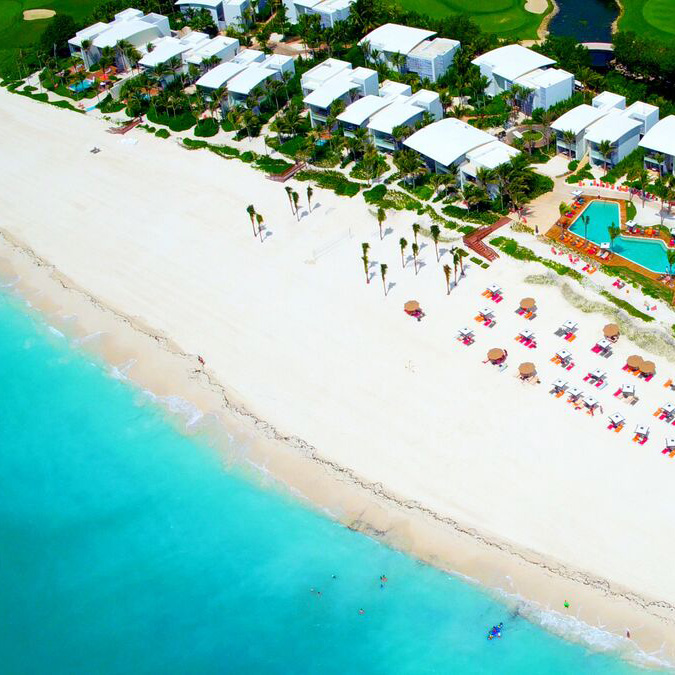
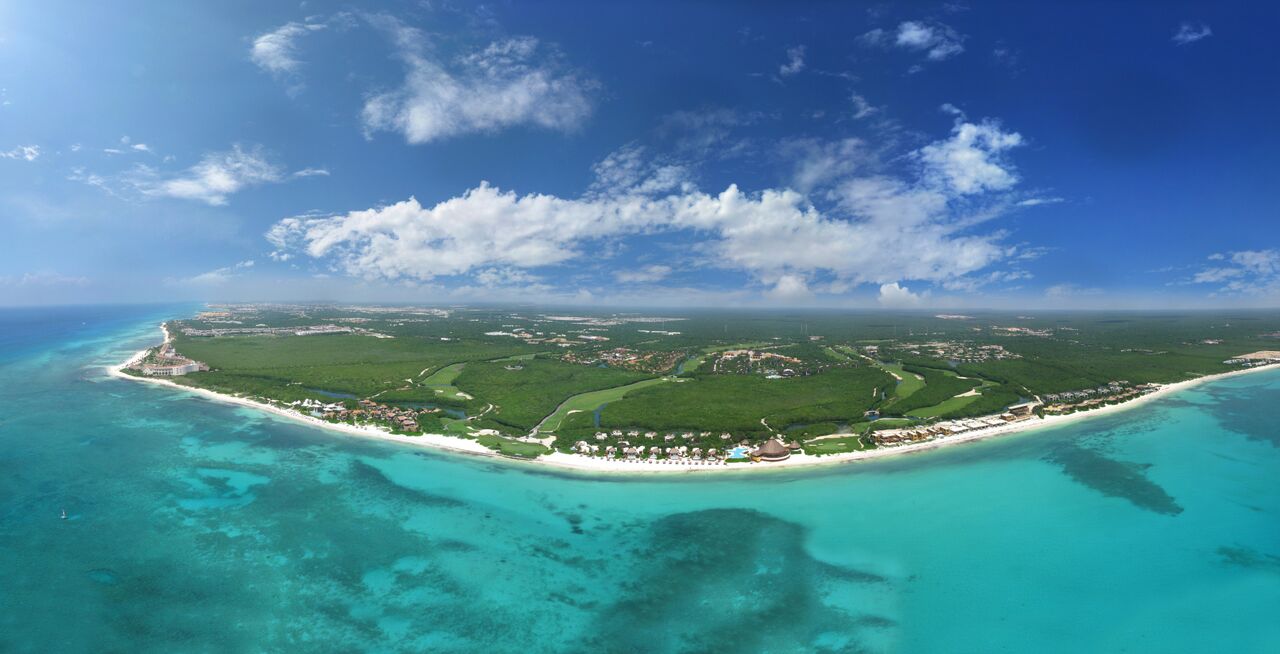
The property…
- was specifically created to be a model luxury enclave that preserves and protects the beach, jungle and wildlife for future generations.
- employs a team of onsite biologists to conduct general monitoring of the over 200 species of birds and wildlife to ensure favorable physical conditions.
- implemented a project to rehabilitate its coastal ecosystems in order to increase sea levels, rebuild coastal sand dunes, recover reefs and create new coral barriers.
- received the Sustainable Standard Setter Award from the Rainforest Alliance and the Ulysses Prize for “Responsible Tourism Development” by the United Nations World Tourism Organization in 2011.














